FOCUS Network for Advance Visual Research
2014-2017
Dylan Yamada-Rice, Abi Hackett, Eve Stirling and Lisa Procter
Funded by the White Rose Doctoral Training Centre
Focus was set up by a group of academics (of which I was one) in order to apply a punk ideological approach to research methodologies in response to our generation which is motivated by the process, the formation of new ideas and experiences, rather than the older structures of status or power. Thus FOCUS was formed and continues to have parallels with the ethos of many subcultures:
- DIY
- Create and innovate
- Exchange, swap, collaborate
- Care about something
- Be yourself
With this ethos we built a community of academics interested in experimental research methods with an emphasis on collaboration across arts and design and the social sciences.
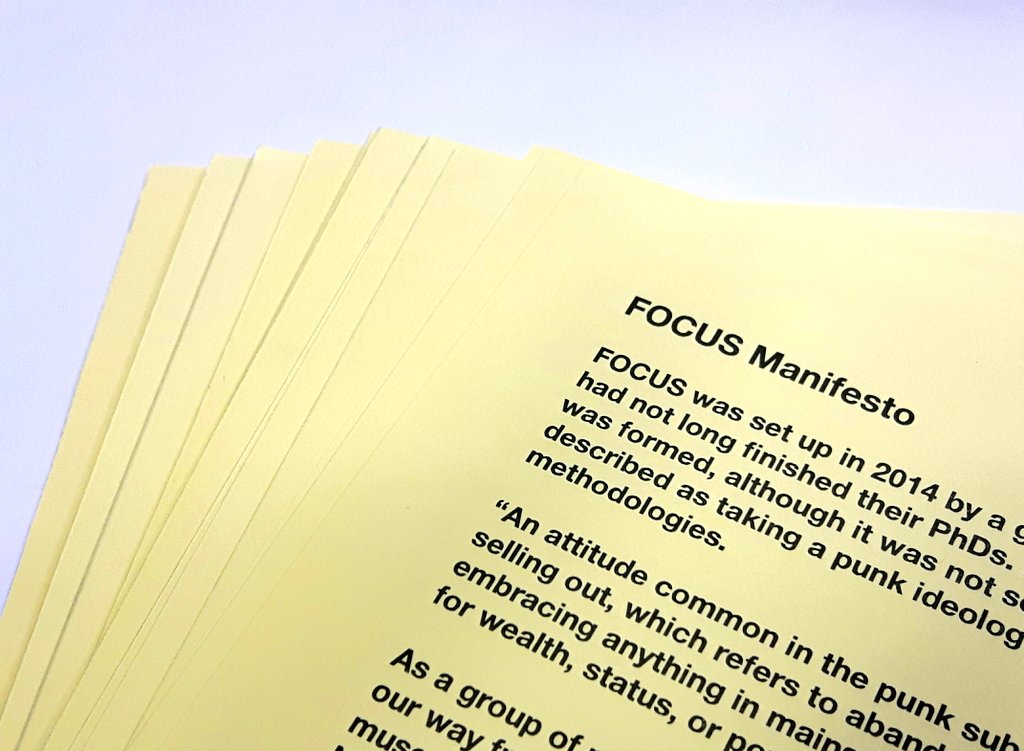
Image: FOCUS manifesto
Summer Schools for Doctoral Students
2017 Advanced Visual Research Summer School
28th-29th September, Z-Arts Centre Manchester
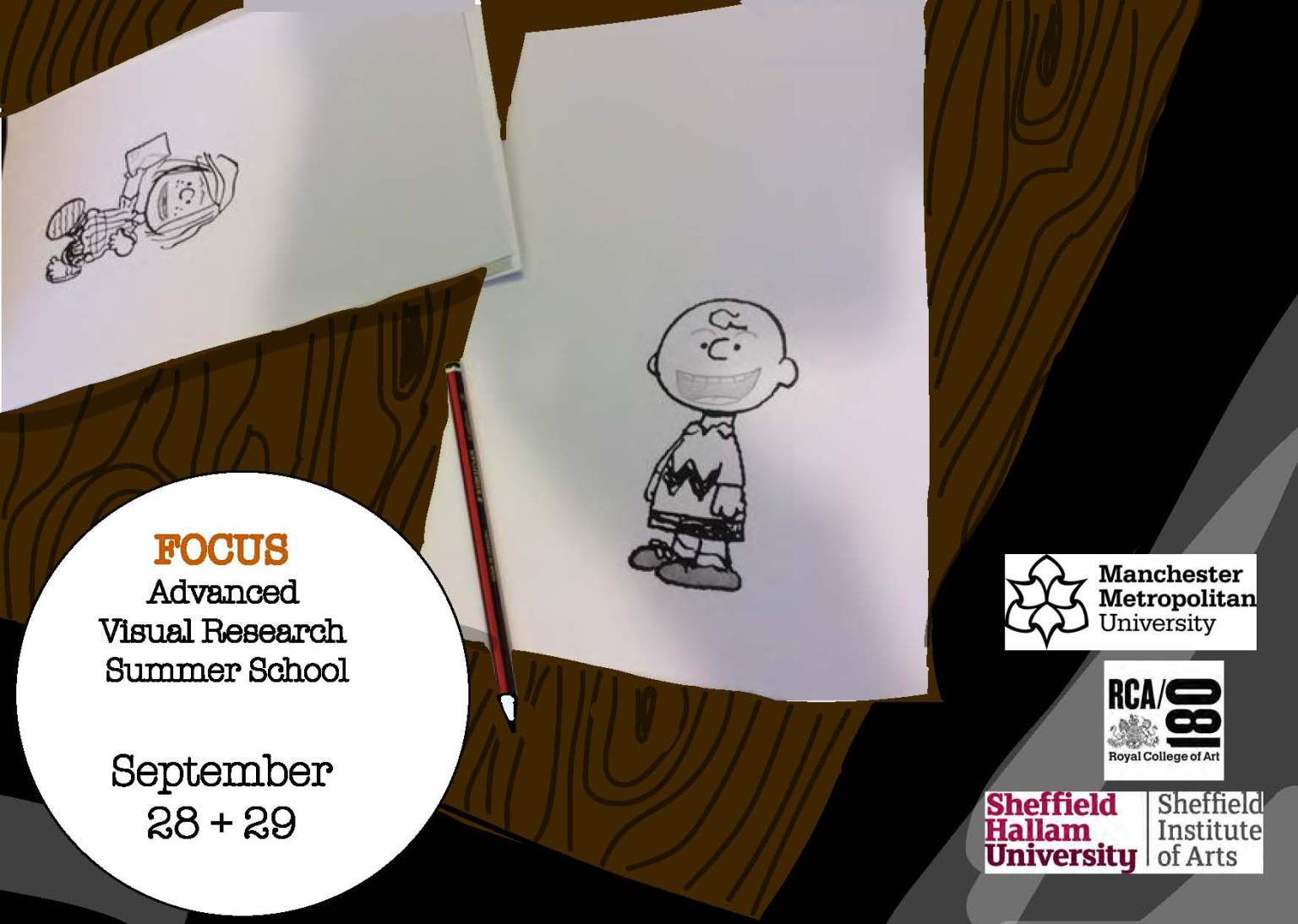
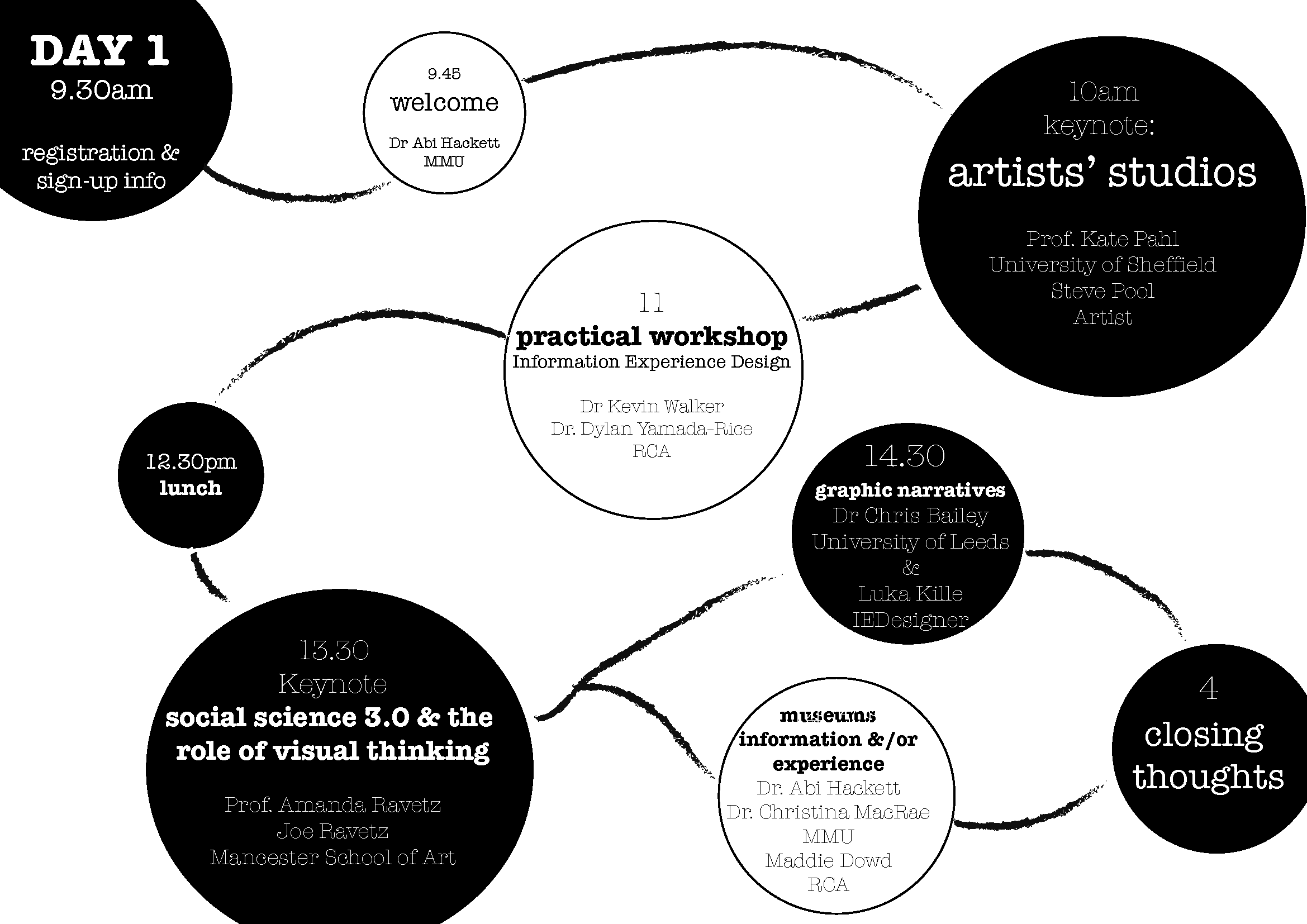
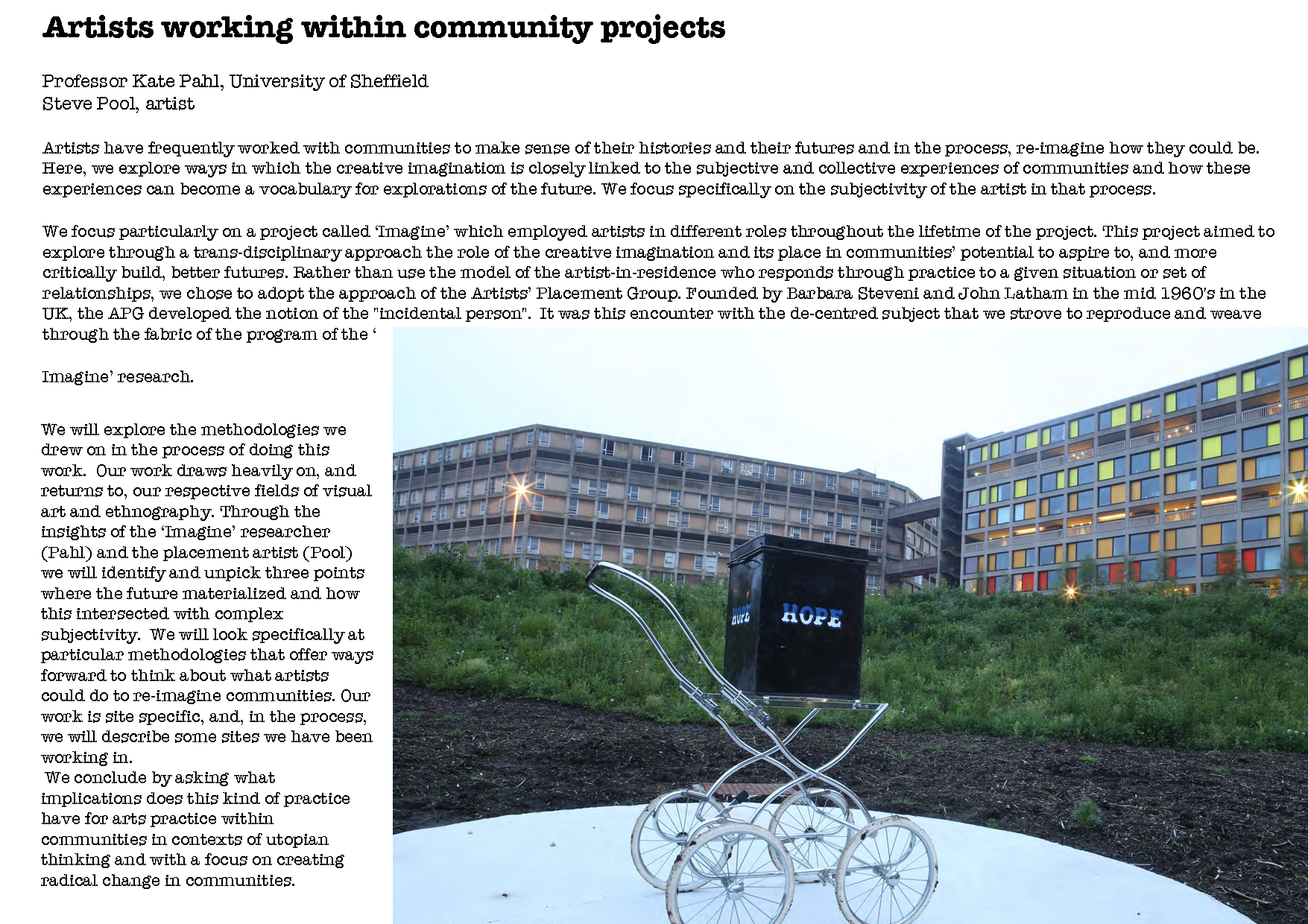
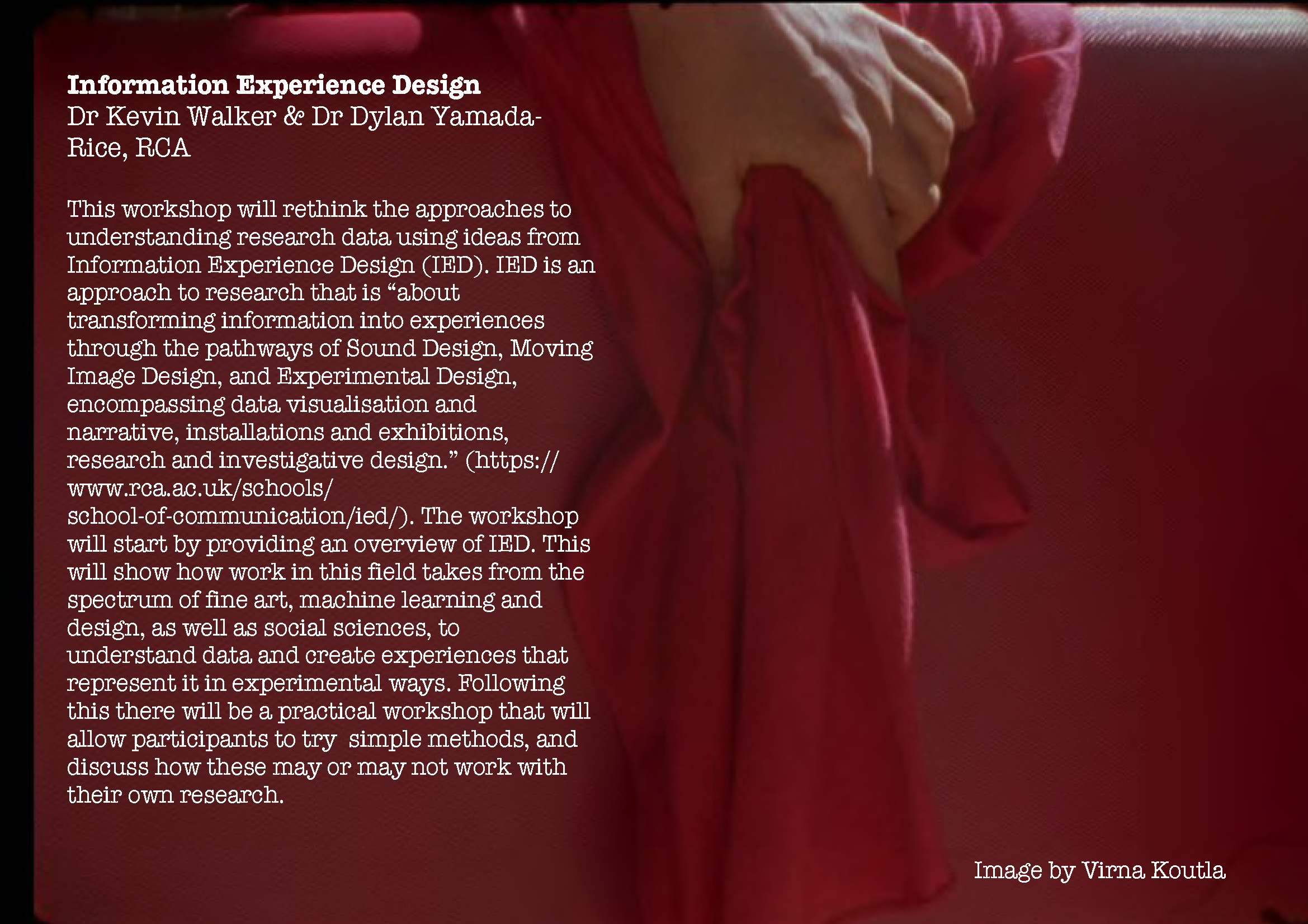
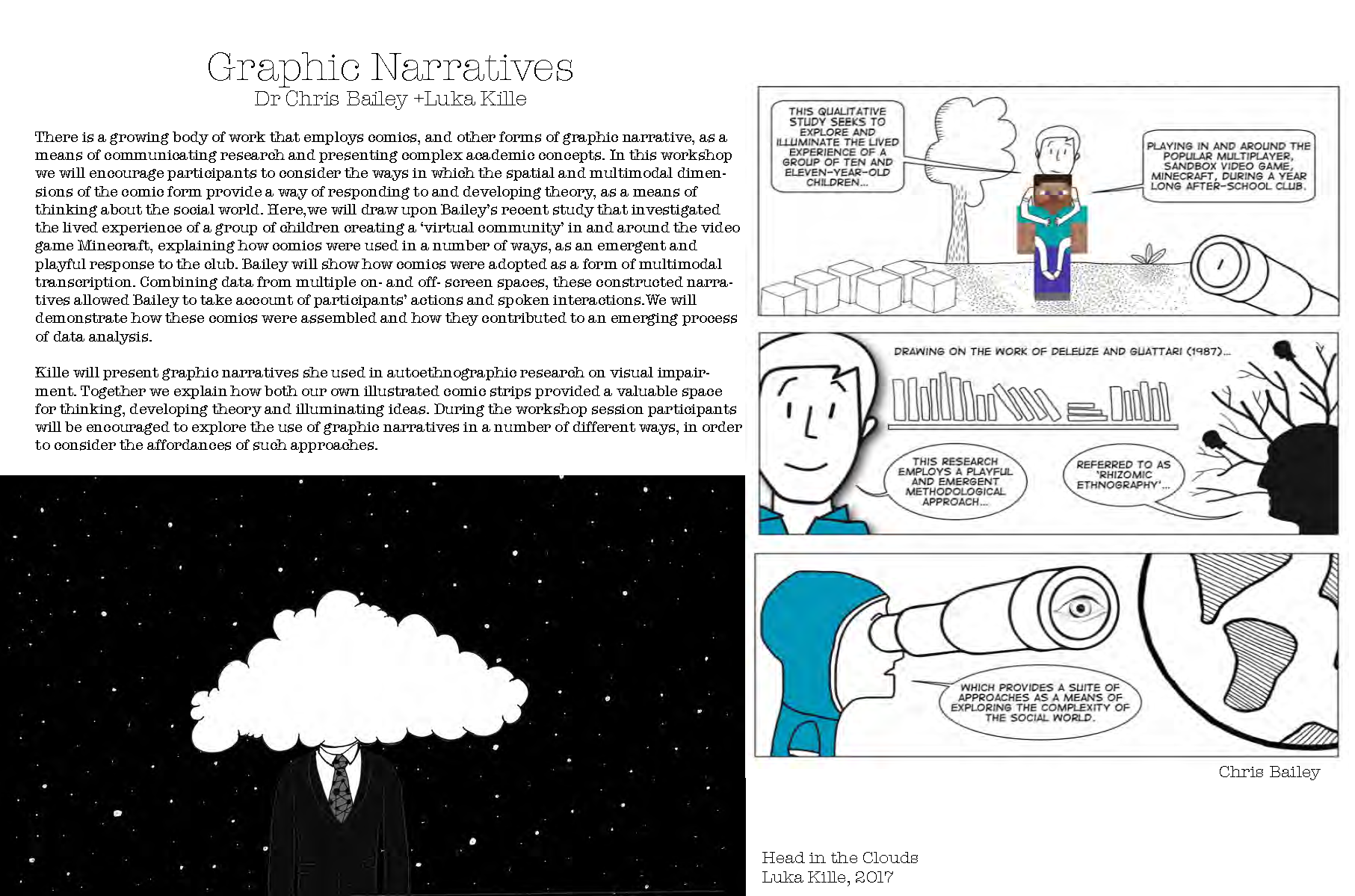

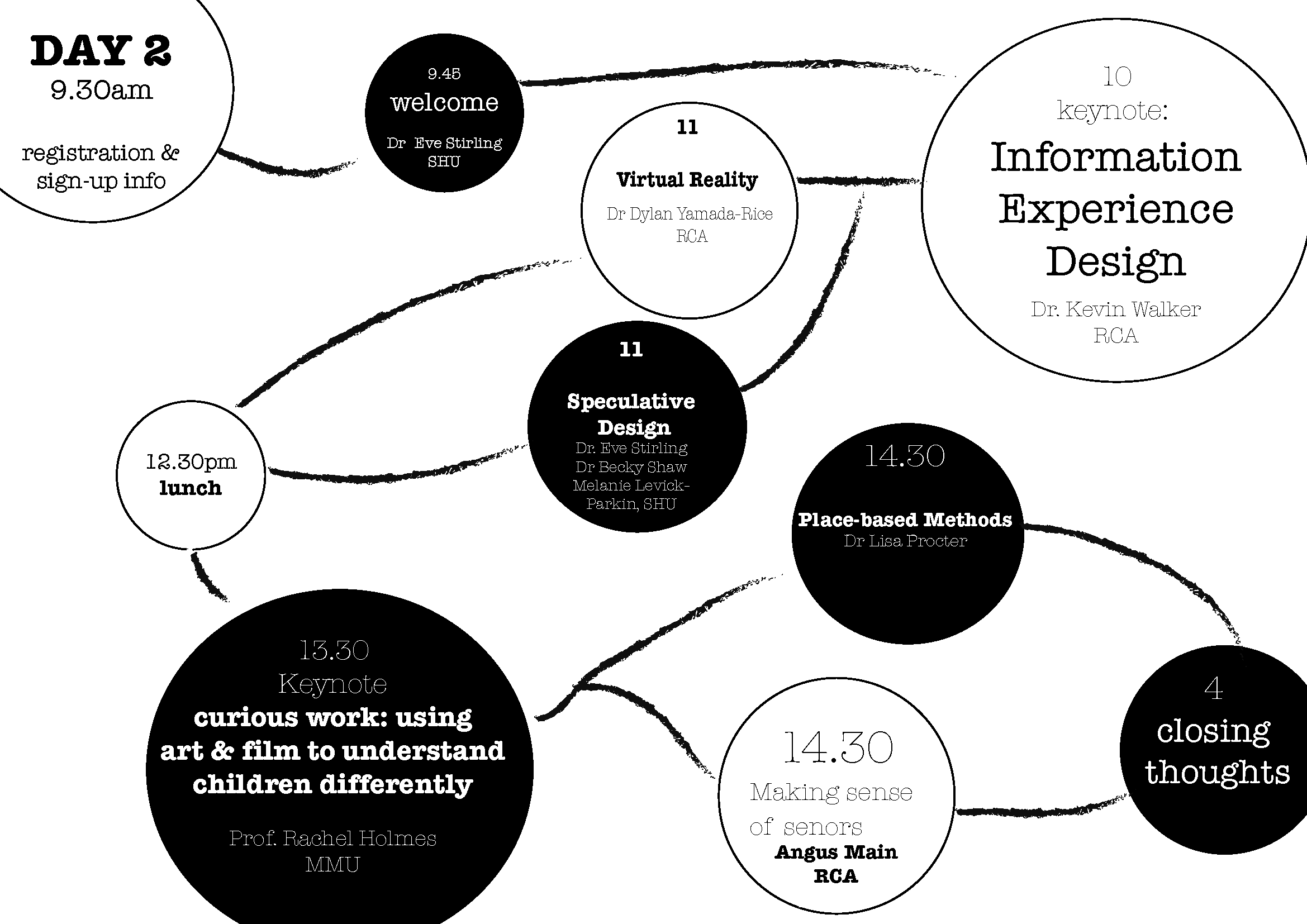
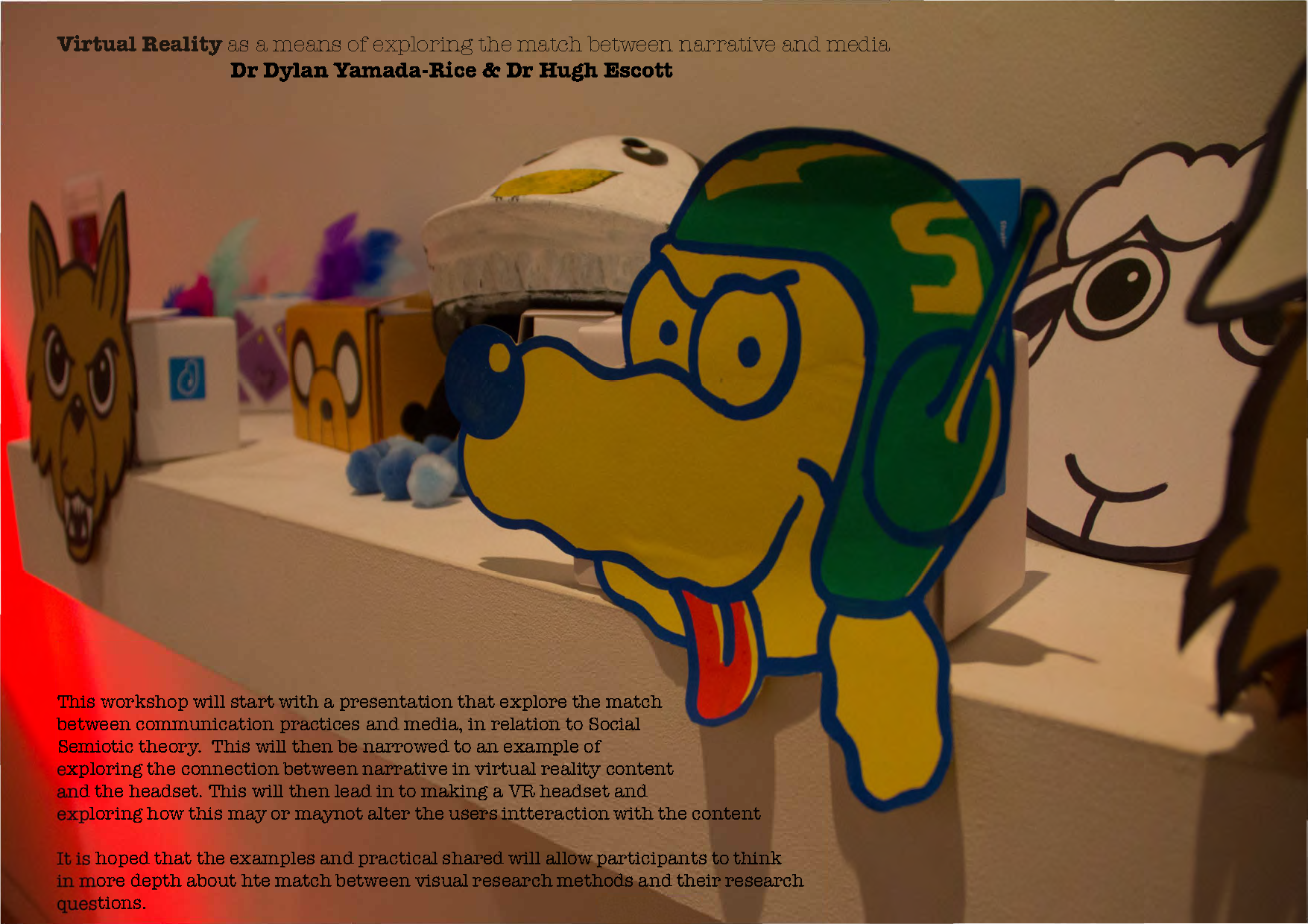


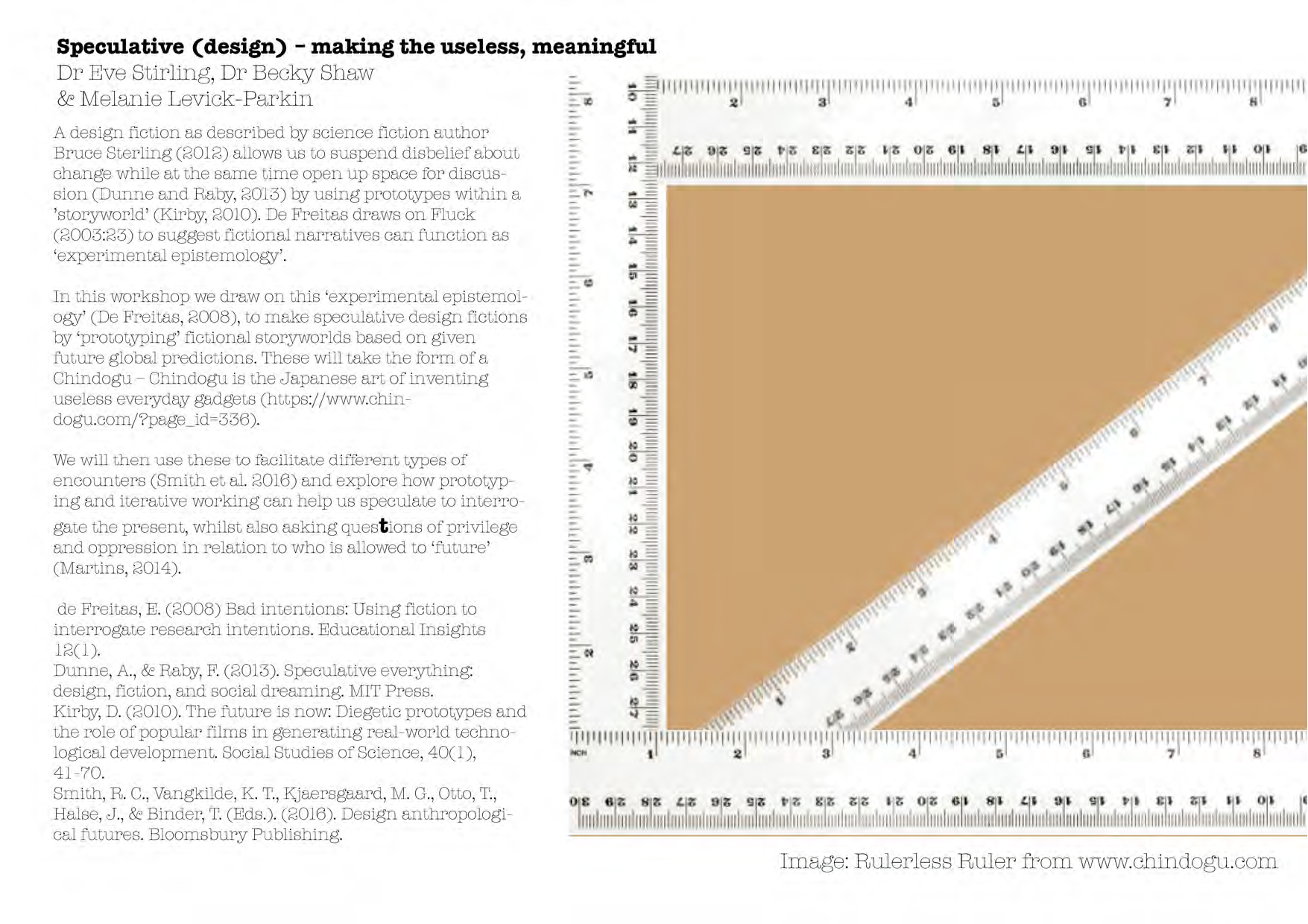

Images: Keynote by Rachel Holmes
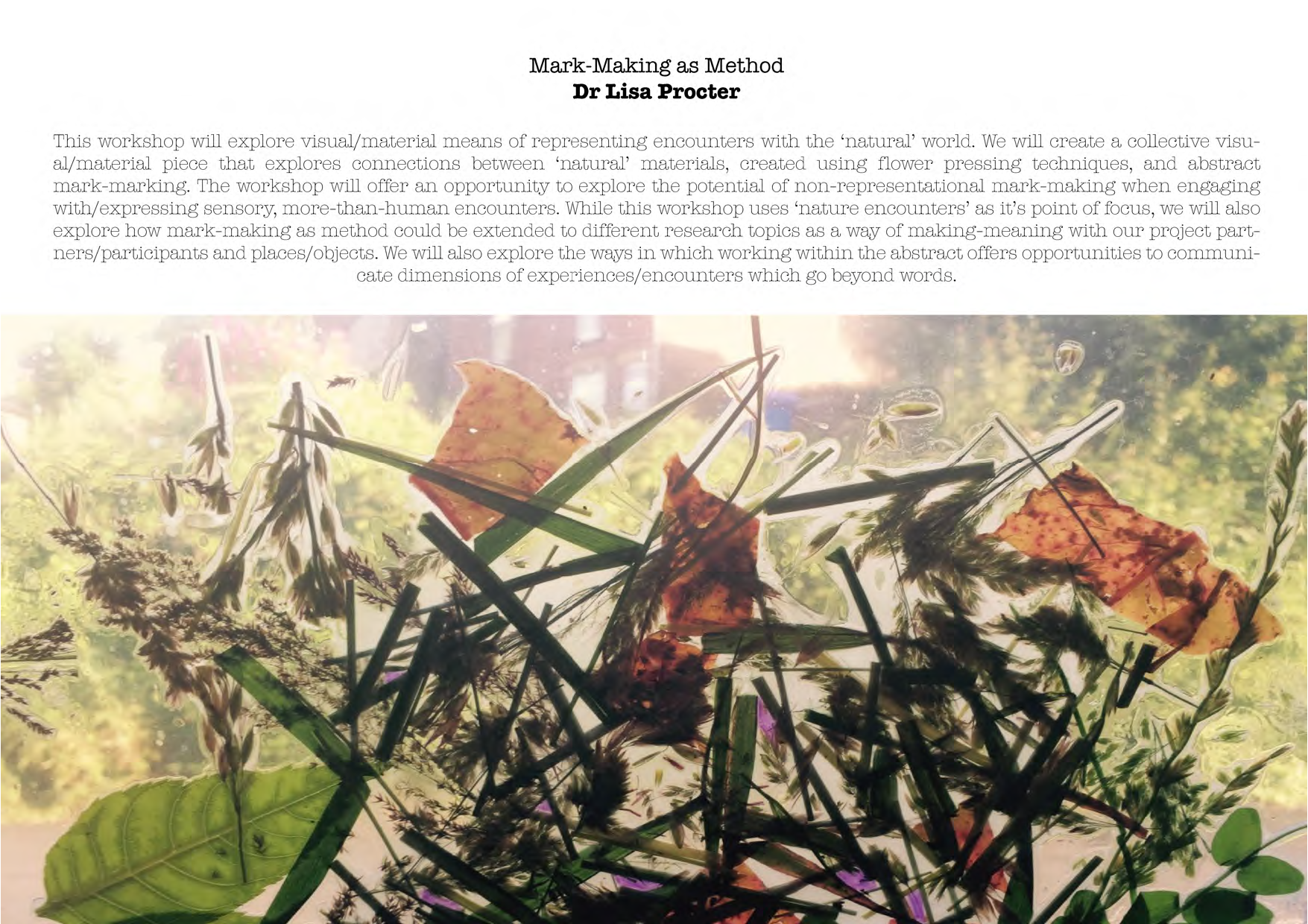

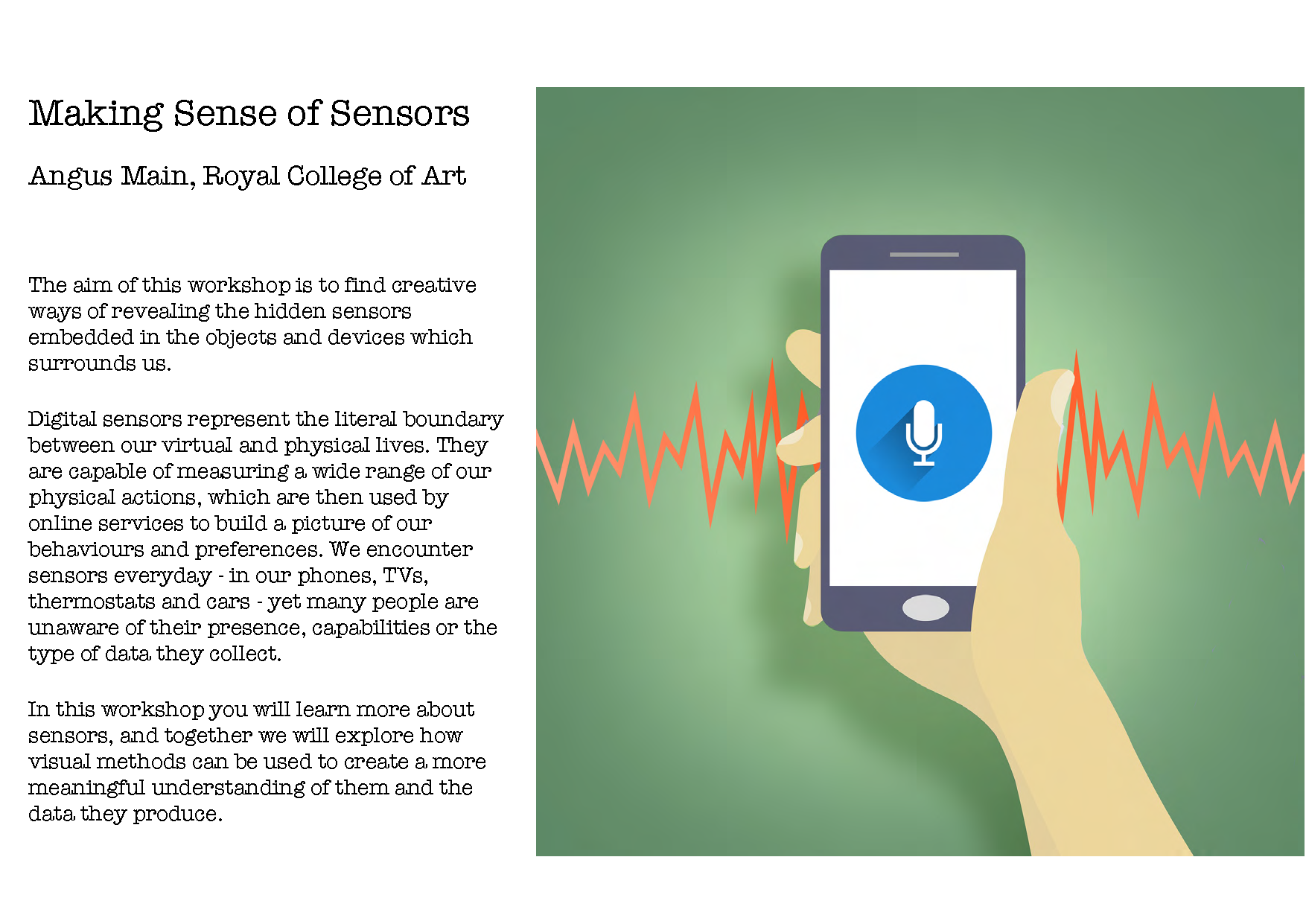
Images: Making Sense of Sensors Workshop by Angus Main
2016 Advanced Visual Research Summer School: Recording process: academic notebooks & artists journals
Interdisciplinary Centre of the Social Sciences, University of Sheffield, 9th and 10th June 2016
The summer school two-day summer school provided teaching of practical and hands-on experience of a range of visual methods that participants could apply or adapt to suit their own research. In-depth training was provided in relation to visual theories, visual methods of data collection and visual representation. Using an explicitly cross-disciplinary approach taught sessions drew on thinking and methodologies from within social sciences, arts and humanities, and visual industries more widely, to think about the nature of the visual and its relationship to knowledge.

The overall theme built on ideas from a then recentedited publication by myself and Eve Stirling (Stirling, E. & Yamada-Rice, D. (eds) (2015) Visual Methods with Children and Young People: Academics and Visual Industries in Dialogue, published by Palgrave). In relation to which the 2016 summer school considered what could be learnt from looking at academic processes of conducting visual research alongside those used in visual/creative industries.

Day One took the theme Recording process: academic notebooks & artists journals. It considered methods used by academics when keeping a research journal, as well as journals and sketchbooks used to record process and thoughts by artists, photographers and other creative practitioners. The second part of the day focused on analysing visual, material and sensory records produced in the process of doing and thinking about research. In doing so, we probed the extent to which images are socially, culturally and historically constructed.



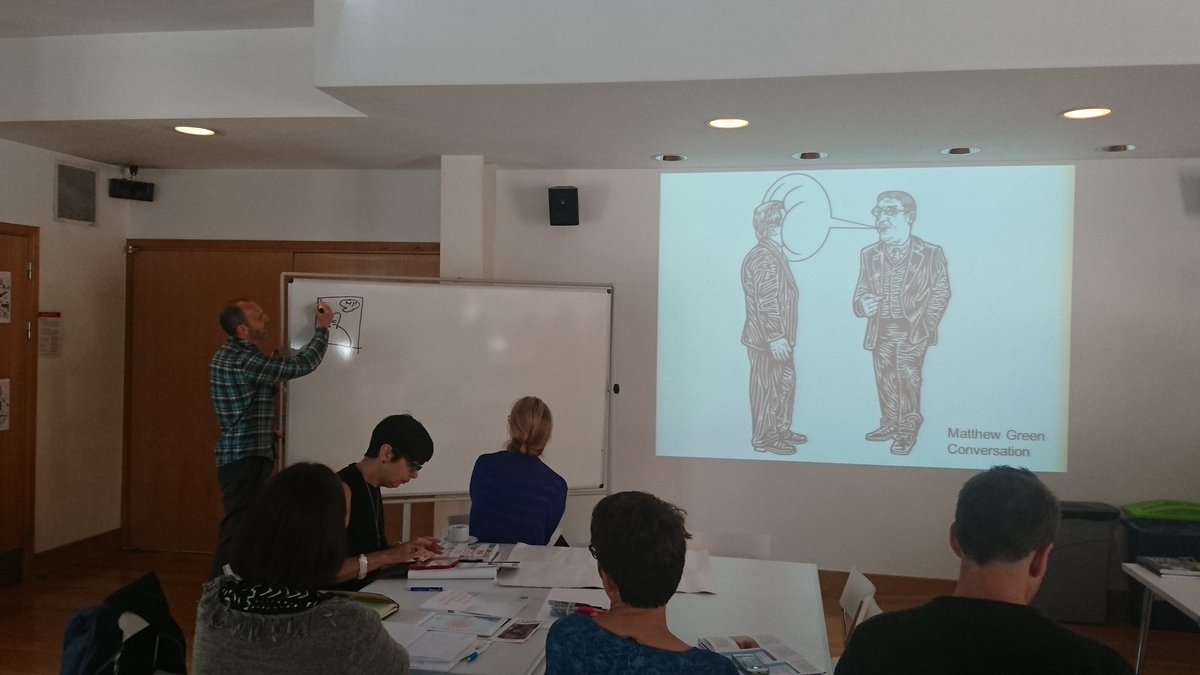
Day Two used the theme of co-producing visual methods. Drawing on a wide range of collaborations between academics, creatives, designers and artists, participants explored practical applications of visual approaches to data collection analysis and dissemination, alongside a broader exploration of how visual industries and academics bring different, competing or complementary framings and approaches to these different areas of research. To facilitate this there was a series of parallel sessions by academics who have worked in partnership with creatives, designers and artists from a variety of disciplines to realise research data in visual media. This was followed by a range of practical sessions in which participants leant about new visual methods, means of analysis and/or means of presentation that emerged from those collaborations.
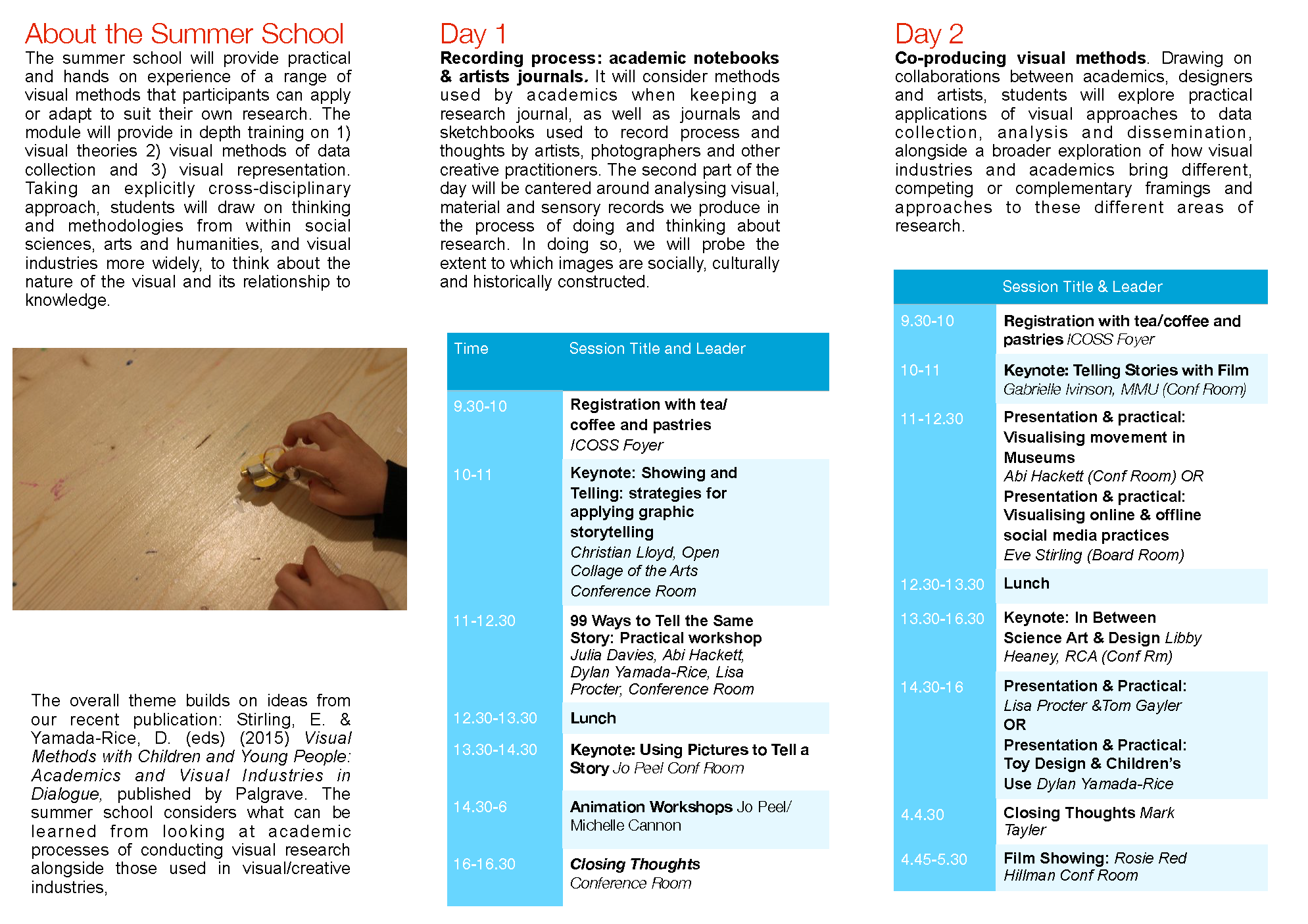
Showing and Telling: Strategies for applying graphic Storytelling
Christian Llyod, Open Collage of the Arts
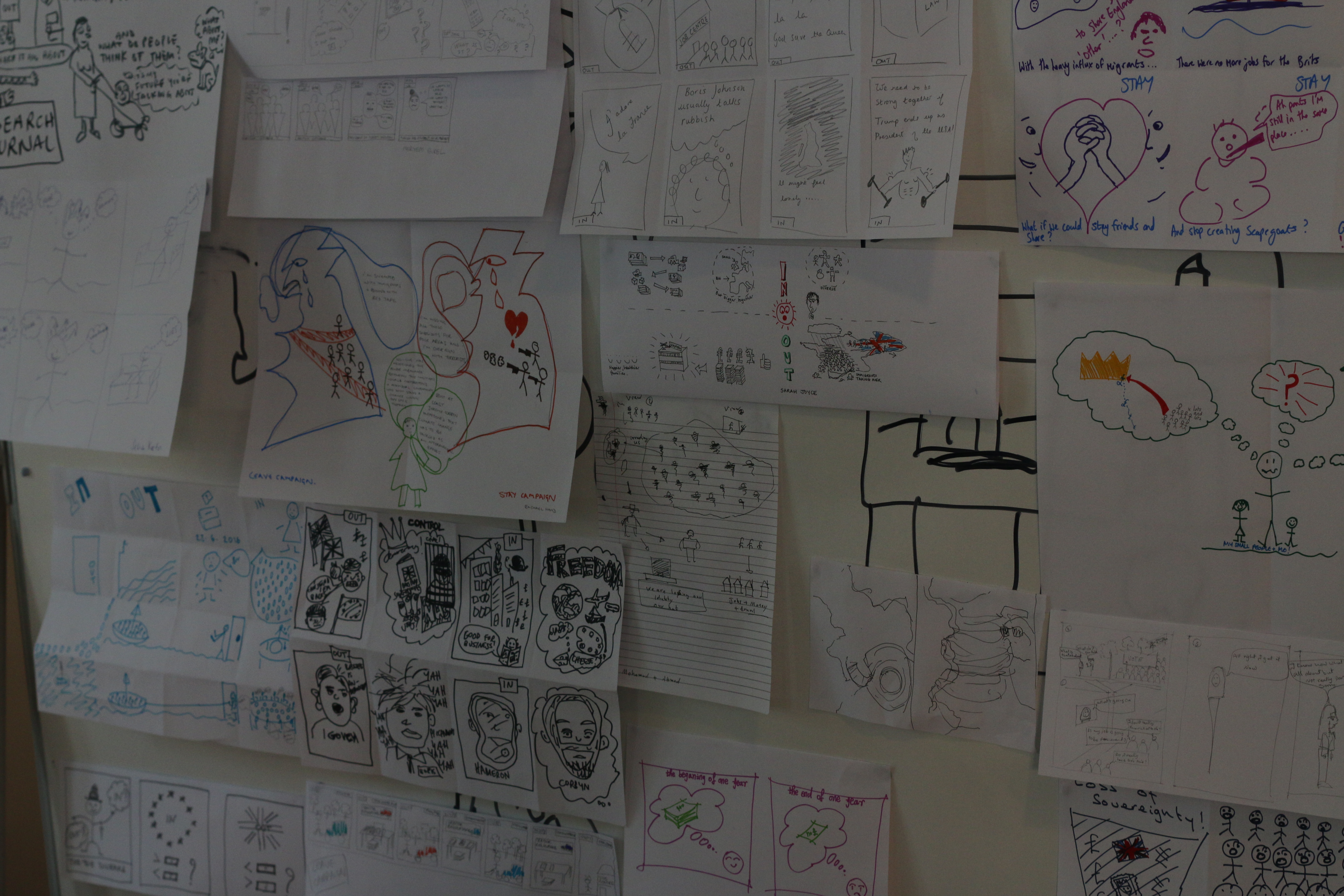





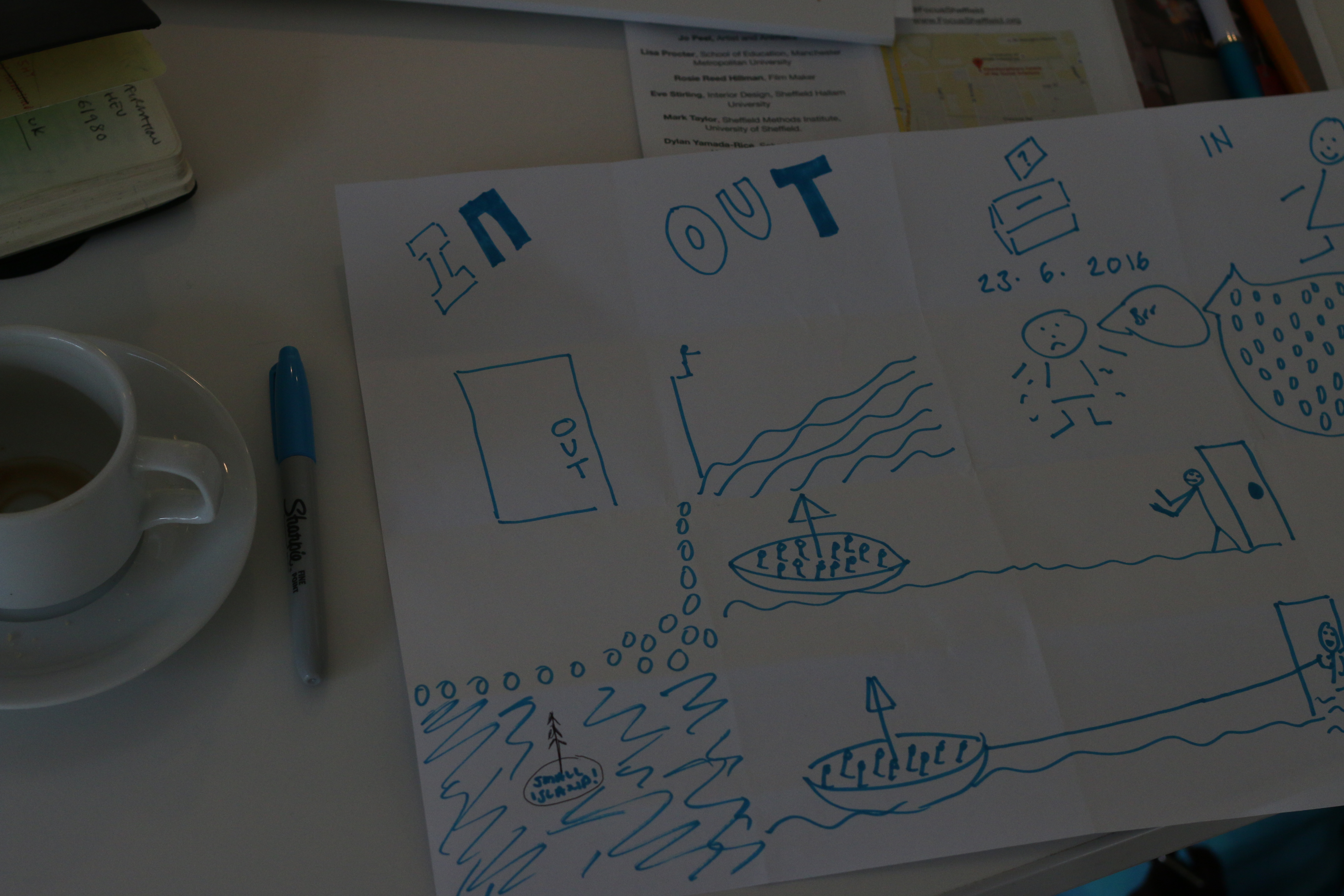





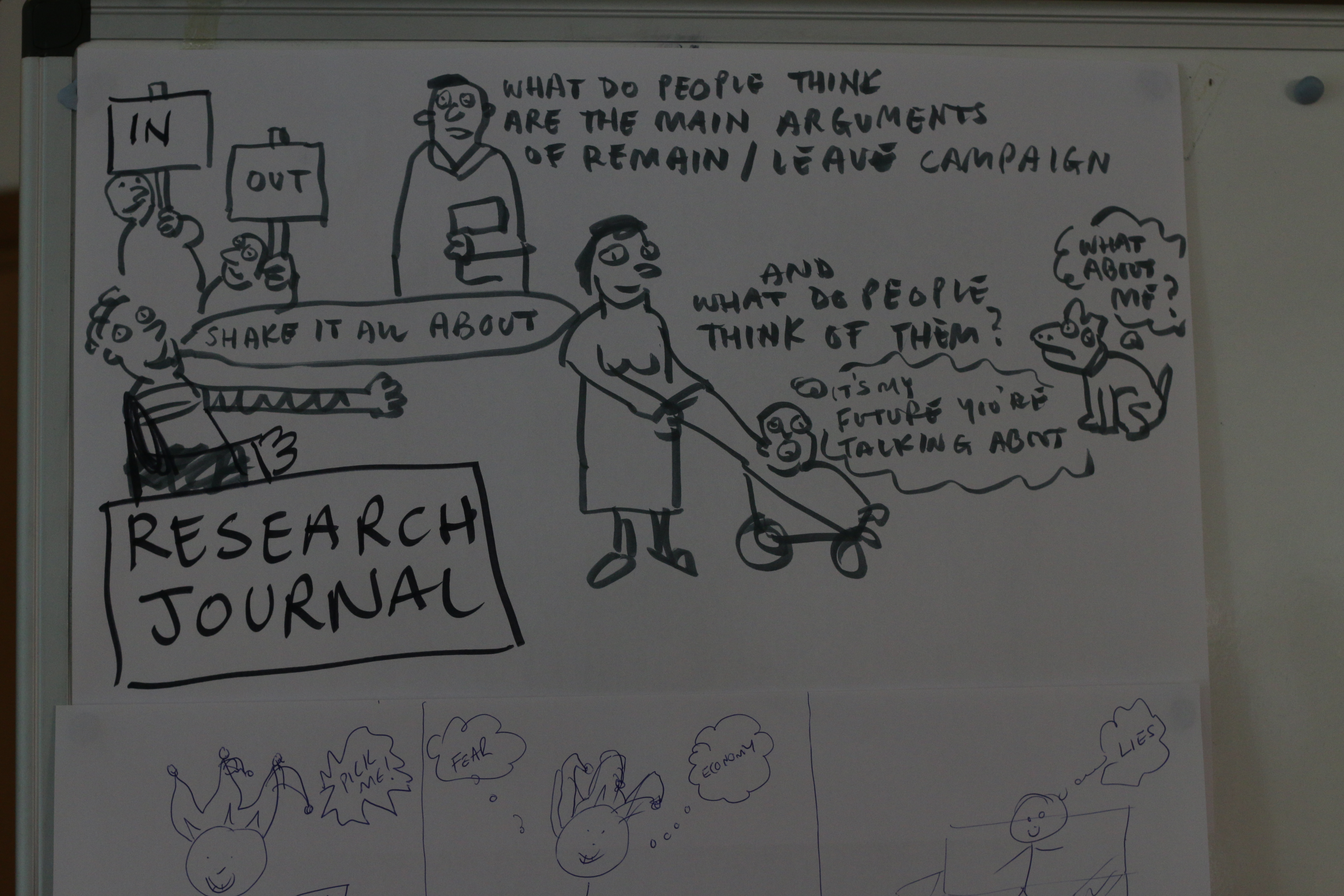


99 Ways to Tell the Same Story
Julia Davies, Abi Hackett, Dylan Yamada-Rice and Lisa Procter, University of Sheffield

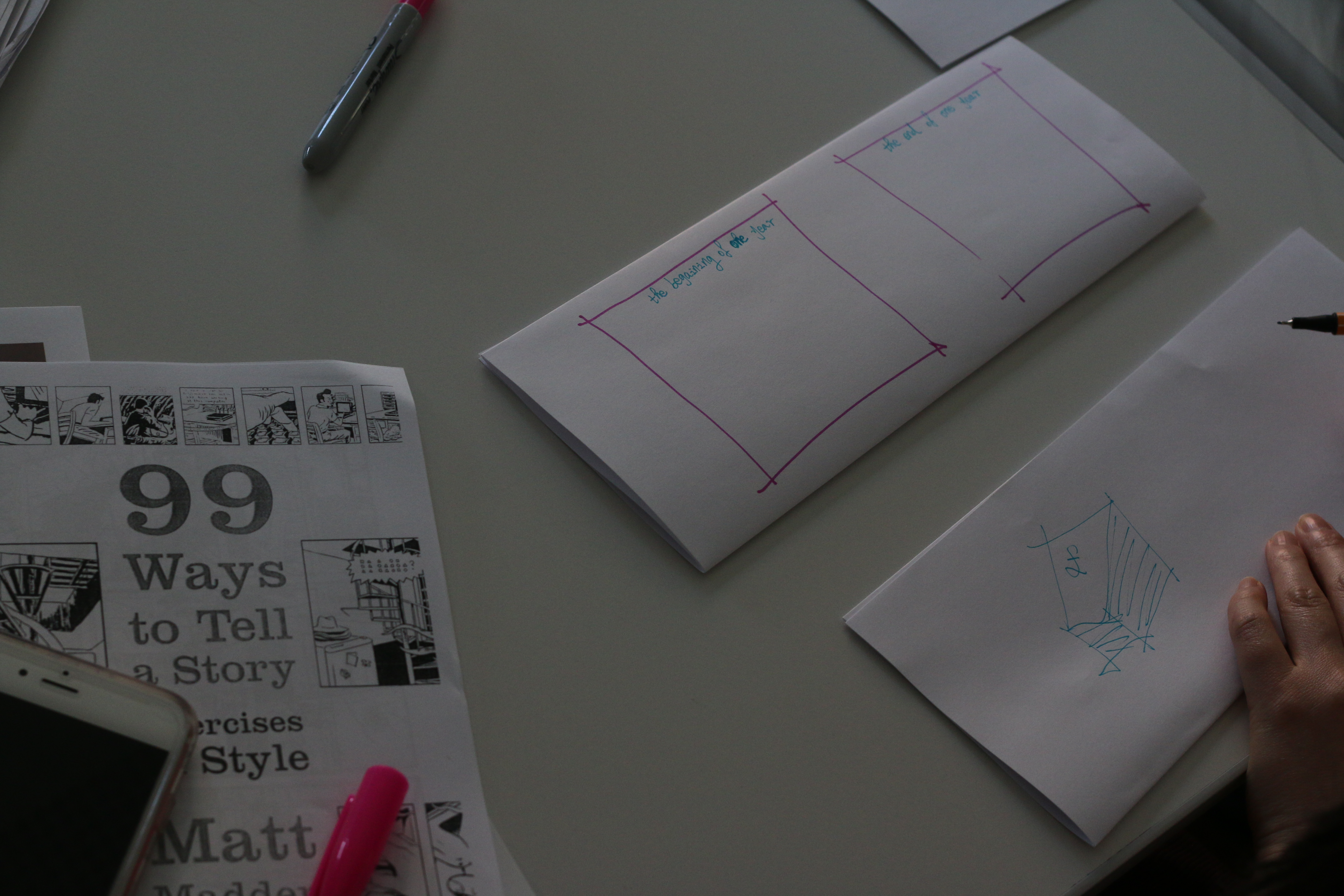

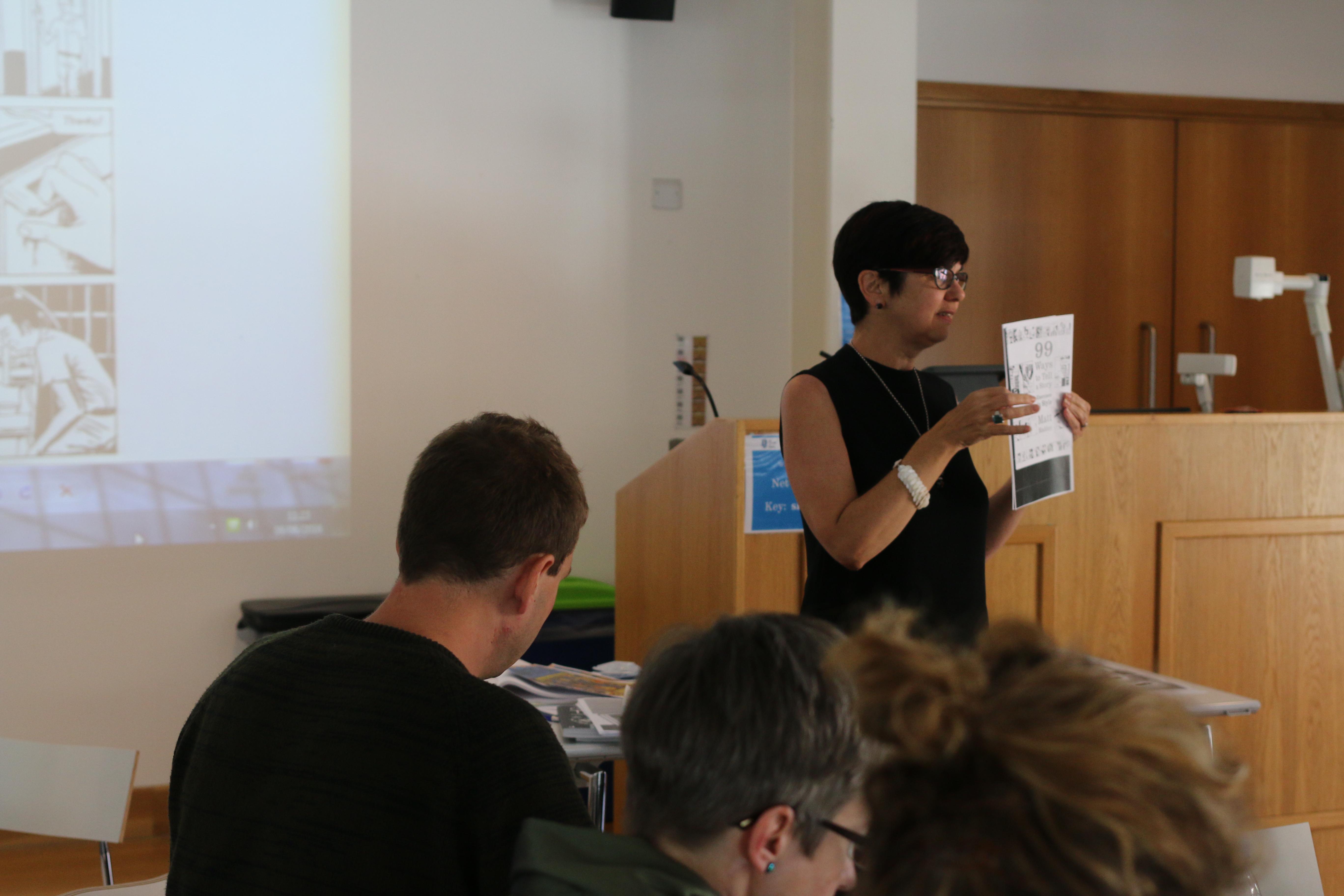
Using Pictures to Tell a Story
Jo Peel, Artist

Animation Workshops
Jo peel and Michelle Cannon
Telling Stories with Film
Gabrielle Ivinson, Manchester Met University
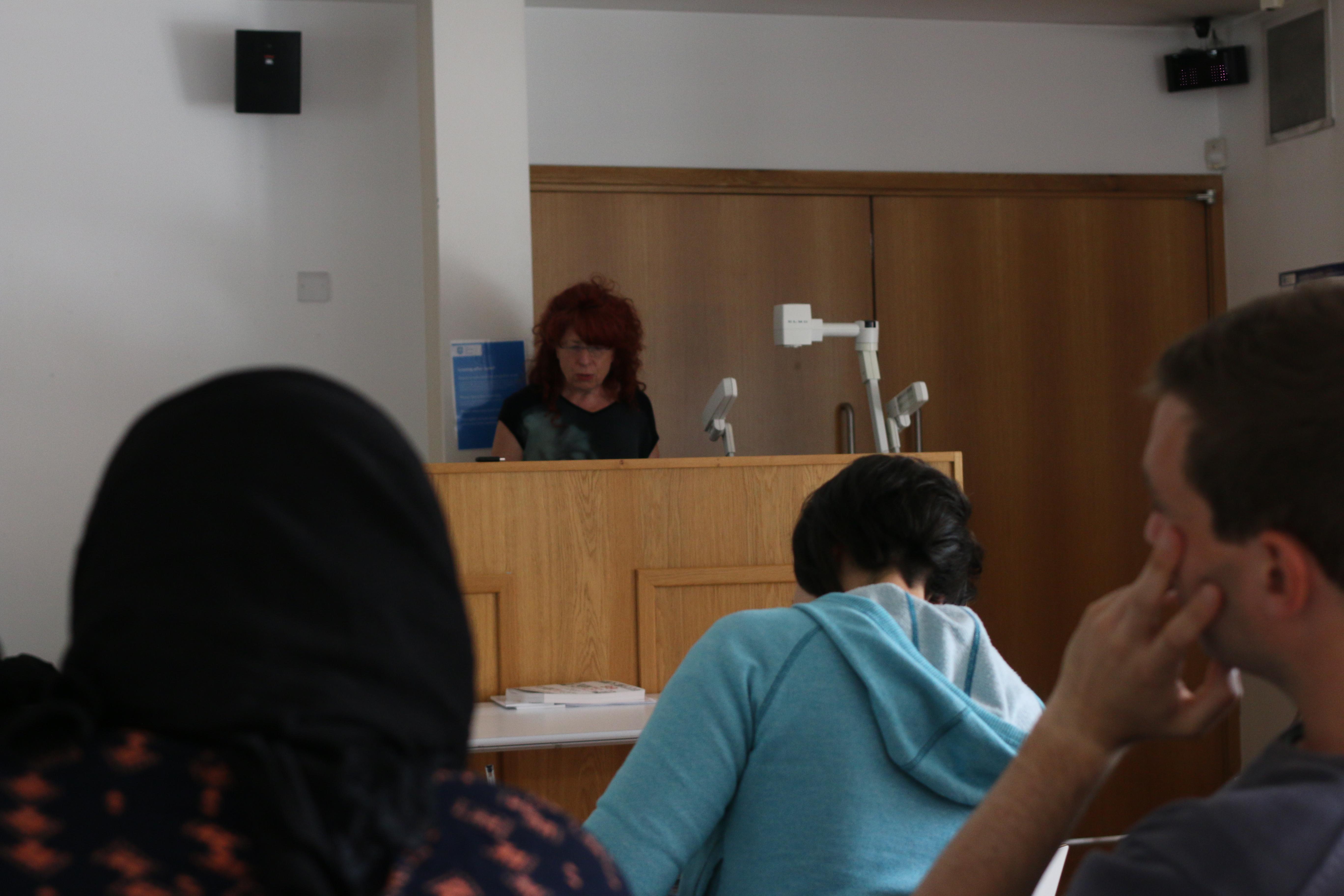
In Between: Science, Art & Design
Libby Heaney, RCA
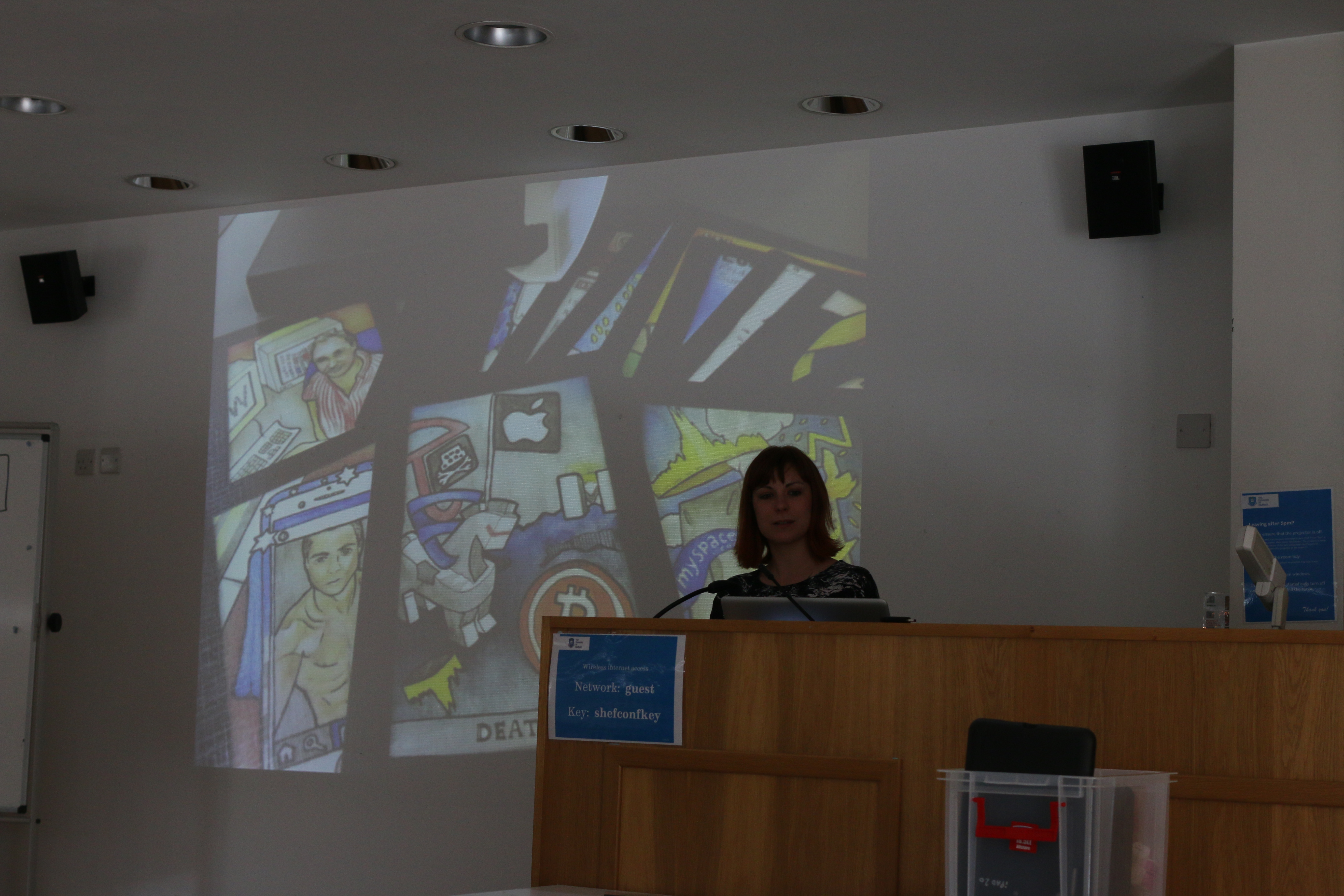
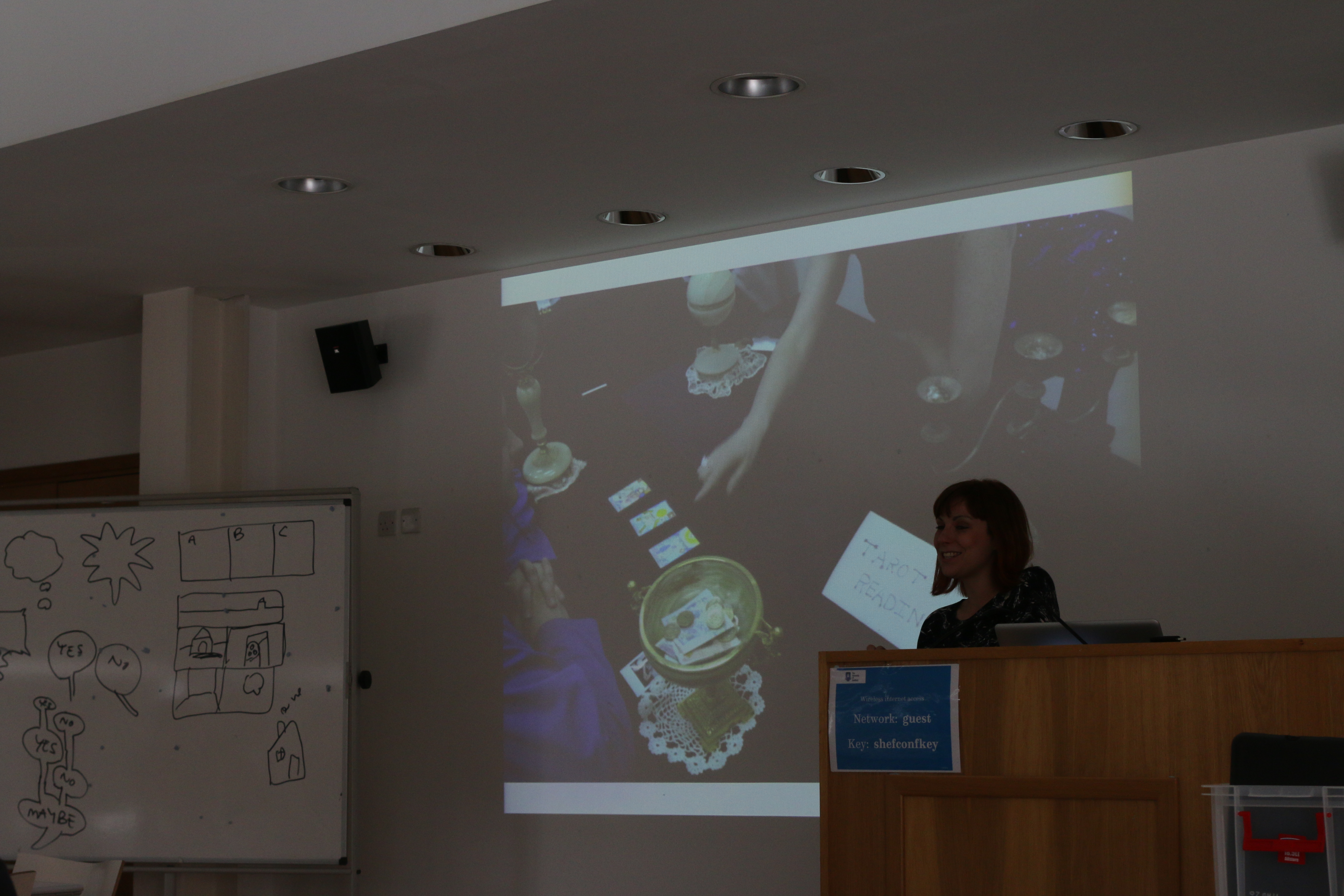
Presentation: Making Toilets Accessible
Lisa Procter, University of Sheffield & Tom Gaylor, MA IED, Royal College of Art


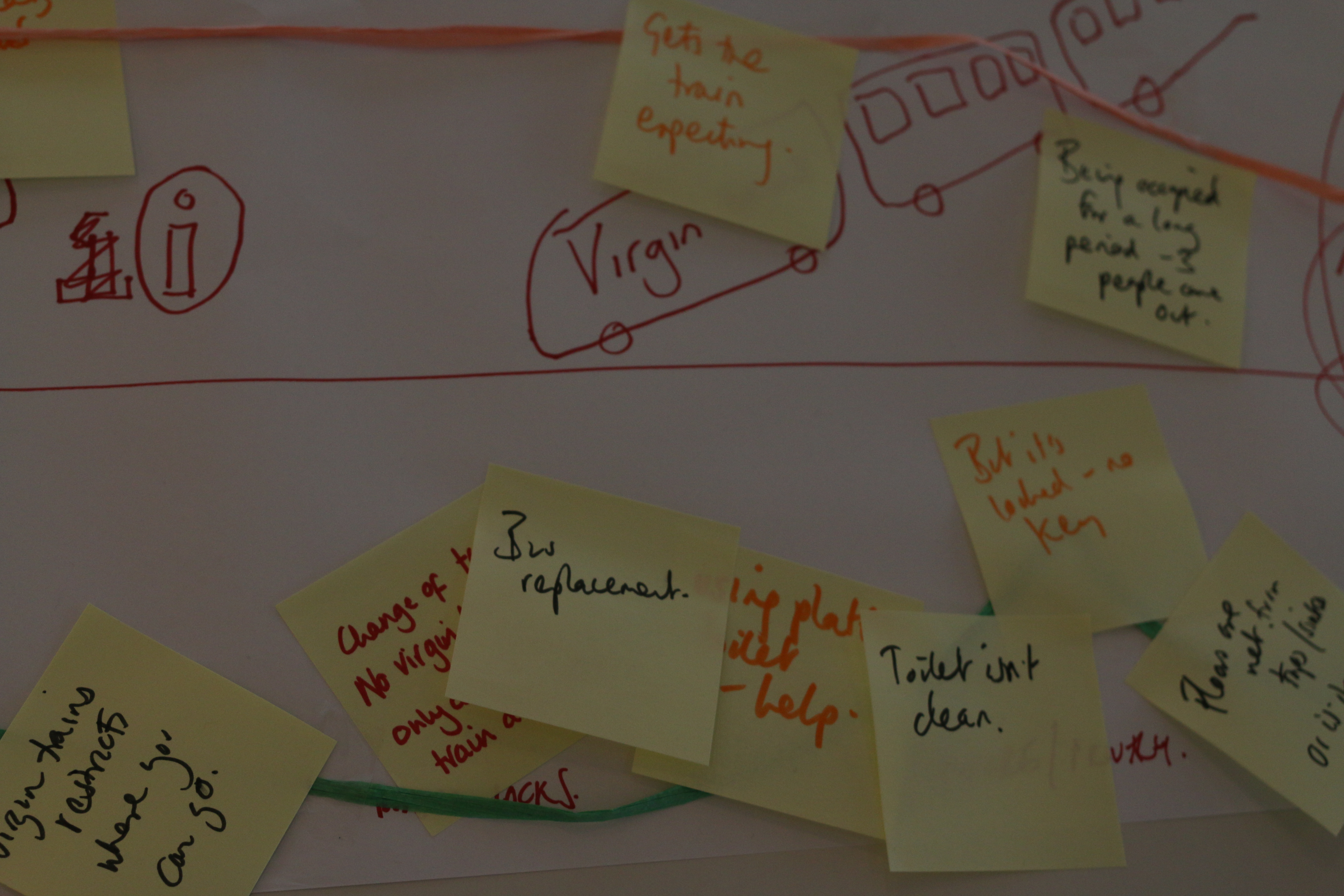

Presentation Visualising Offline & Online Social Media Practices and Practical workshop: Visualising Research with Paper Folding
Eve Stirling, Sheffield Hallam University
Translate your literature/ data/ findings
Open your notebook/ Sketchbook. Chose a page and something you’d like to know more about- cou;d be a quote, a descriptio, some data, thoughts.
Using the same inspiration throught undertake the following 3 tasks:
Create a quick response using folding. 30 secs.
Creat a quick response using folding. 1 min.
Create a quick response using folding. 5 mins.

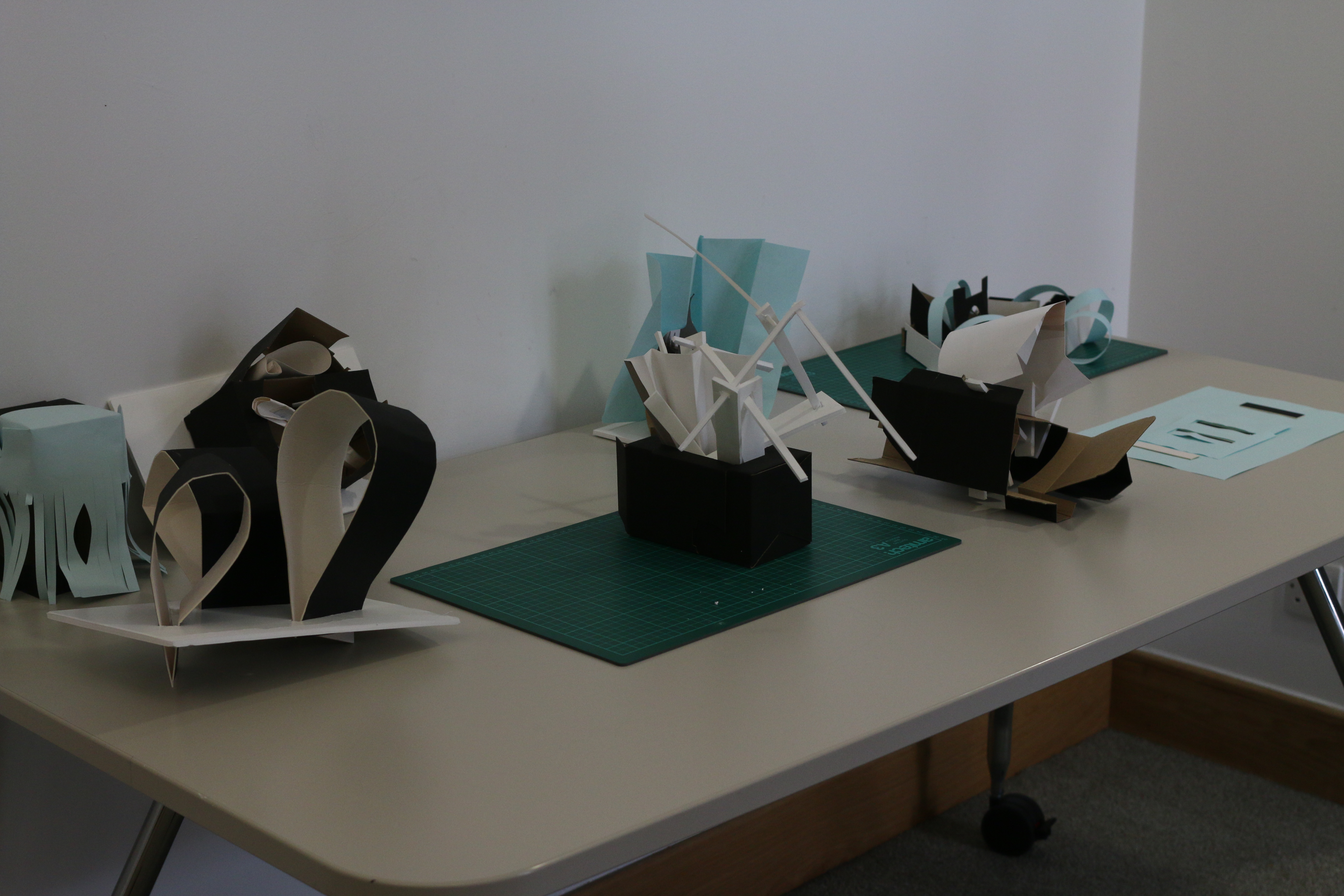

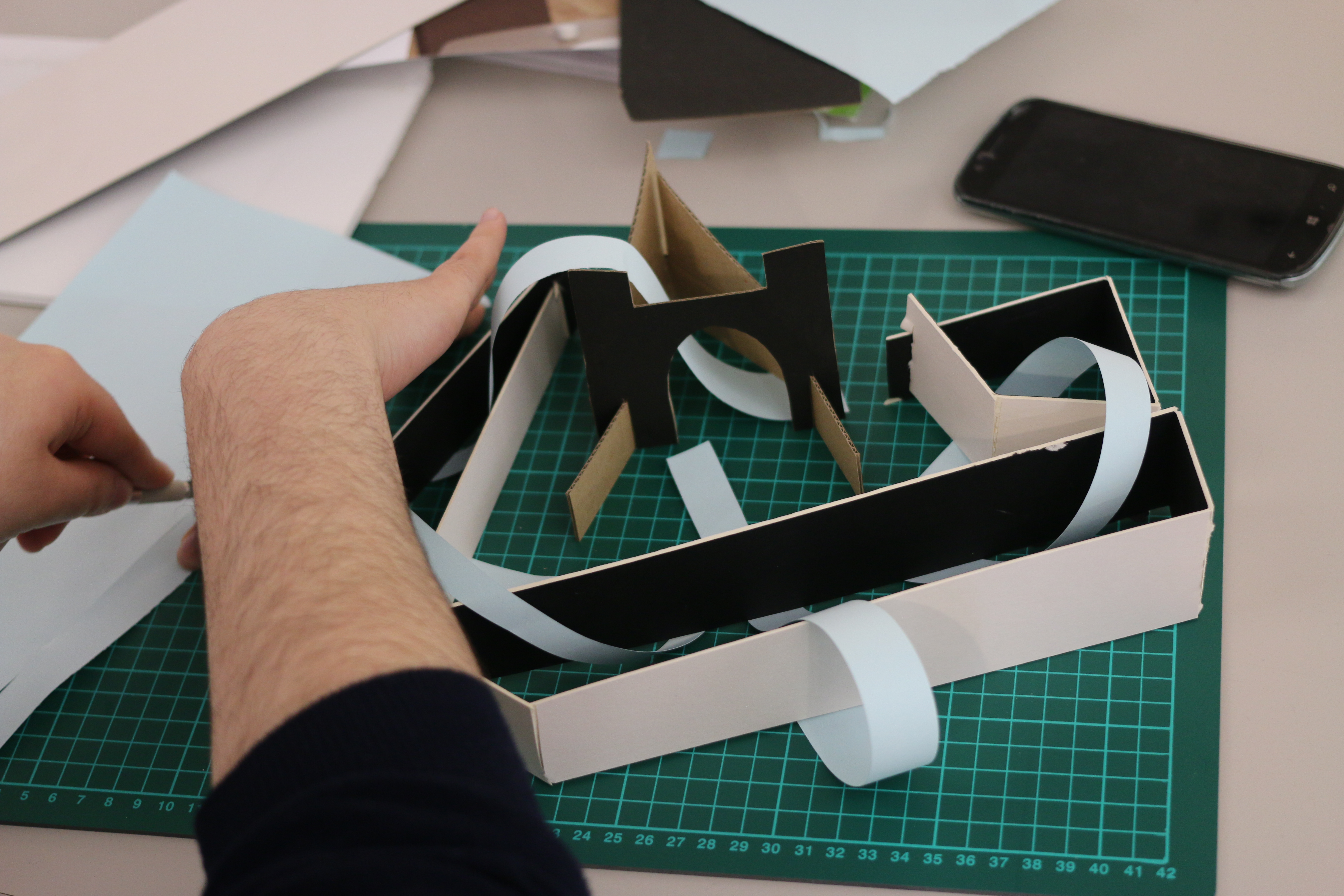



2015 Advanced Visual Research Summer School: Visual Approaches & Theory
September 2015
This was the first FOCUS Advanced Visual Methods Summer School funded by the White Rose Doctoral Training Centre. The idea for the summer school emerged from a two research groups with the Centre for the Study of Childhood and Youth (CSCY): a visual methods interest group (convened by me) and a space and place interest group (convened by Lisa Procter and Abi Hackett). The content of the two day summer school covered the breadth of the visual within research and took a particular interest in the fragmented nature of understandings and applications of the visual across different fields of research, arts practice and industry.
Day 1 focused on visual data collection and analysis.
Analysing Social Media Images/ Farida Vis
Farida emphasised the ubiquity of image sharing via social media, and the need to understand this at different scales, from a single image, to images within a wider social, cultural and historical context. Sharing of images through social media encompasses both the everyday and the exceptional, often from the same posters, so it is also important to understand the interaction between everyday and exception digital image sharing.
Citizenship in the Age of the Selfie/ Adi Kuntsman,Manchester Met University
Challenging the audience to consider whether they themselves post selfies, and whether they see this practice a superficial and egotistical, Adi focussed on the use of selfies within political protest and identity practices. Her research has charted the changing nature of selfies used in political commentary by Israelis on the occupation of Palestine. Presenting the work of artist Zach Blas, Facial Weaponization, Adi also offered the provocation that there is a relationship between use of the face for political statement, and use of facial recognition technology for citizen control and surveillance which we need to seriously consider.

Day 2. Methods: Analysing Social Media; Citizenship in the age of the Selfie, Performance Ethnography, techniques for representing emotion in research, photography and multimodal theory, using ipads to make comics as a means of analyzing data.
After Images; Bodies of Space: In search ofspatially, somatic, sensuous, performance ethnographies/ Solomon Lennox, Northumbria University
Performance ethnographies (Conquergood 1985, Fabian 1990, Denzin 2003), and performance autoethnographies (Douglas 2014), are arts informed research practices that include the creative, embodied, subjective and emotional aspects of life. At their best, performance ethnographies are a holistic approach to the examination and presentation of empirical data; they draw upon the sensuous, the somatic, the spatial, and the temporal components of the study; they situate the researcher within the study; they are highly critical and selfreflexive; they challenge dominate modes of representation; they counter hegemonic narratives; they invite audiences to grapple with ‘transgressive data’ (St Pierre 1997); they foreground the body as something that people can know with, about, and through (Chawansky 2014).; they enhance polyvocal, diological, and democratic ways of understanding phenomena(Gregen and Gregen 2011).
However, there is a danger that performance ethnographies fail to counter the ocularcentric bias so prominent in Western empirical studies (Sparkes 2009). Similarly, they may fall victim to cases of excess subjectivity, where the
position of the researcher is privileged above all others (Woodward 2008). Through the creativity inherent in their construction, performance ethnographies may erase their own artfulness and present themselves as realistic
depictions of phenomena (de Freitas 2007),thus, producing senseless and deceptive accounts - seemingly unproblematic authorial texts.
Drawing on Schmeider’s(2011) argument pertaining to the re-enactment of an historical event, this paper argues that performance ethnographies need to be considered as a ‘queer kind of evidence’ (101). This performative presentation is informed by Garner’s(1994) Bodied Spaces, particularly his notion of the ‘after image’, and Sparkes’ (2009) work on ethnography and the senses. The paper questions how one accounts for, incorporates, and reenacts the embodied experiences of the ethnographic researcher. To what extent is the site-specific nature of ethnographic fieldwork adequately accounted for in traditional research texts?What might a spatially, and sensuously aware performance ethnography look like?This performative presentation invites audience members to sense the trace elements of an ethnography of boxing spaces, and an ethnography of a Muay Thai training camp.

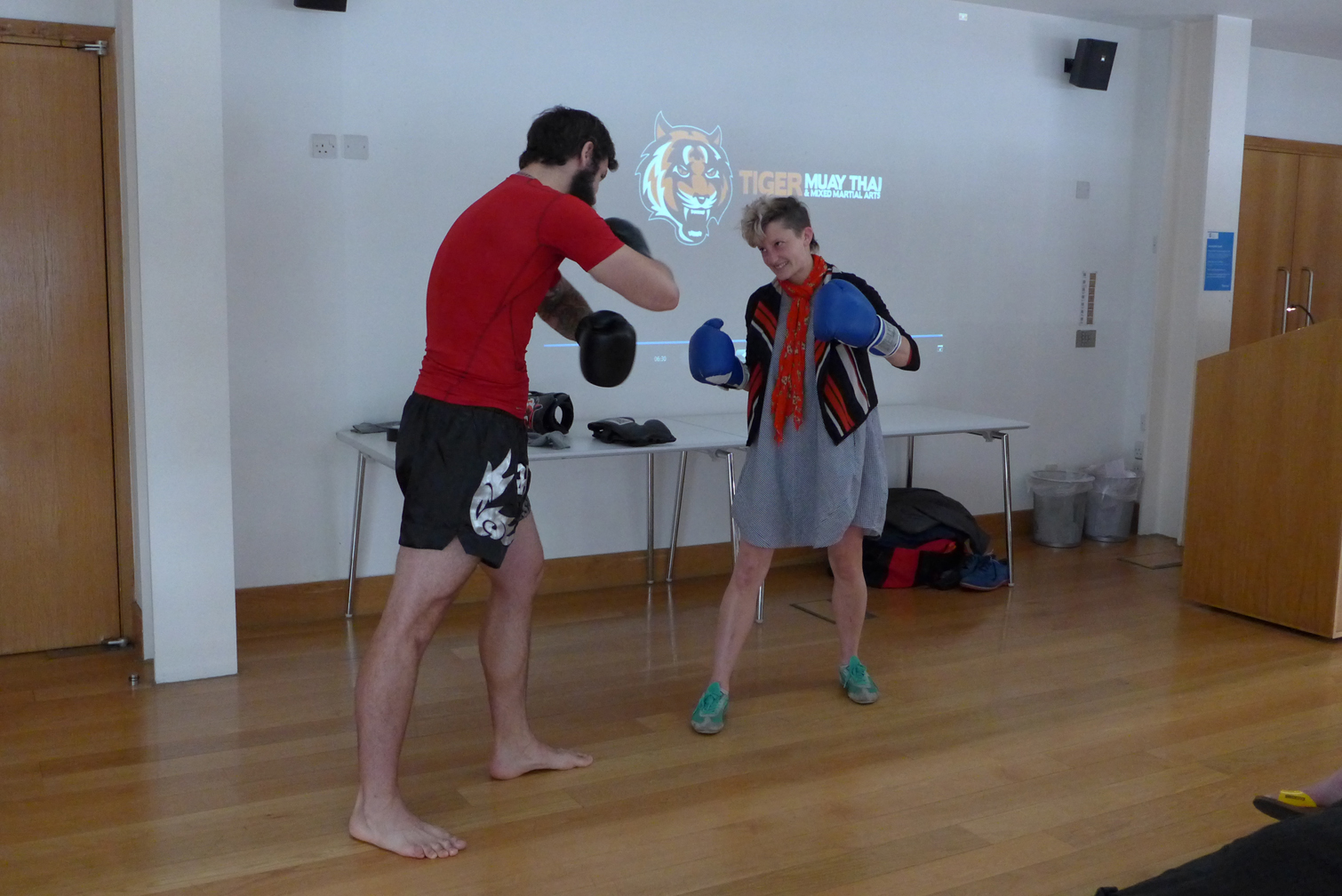

Making emotions: materiality in visual research/ Lisa Procter & sculptor Simon Wigglesworth-Baker
In this session you will work with an artist to explore how emotional experiences can be explored using material objects. The artists will introduce you to their work, which considers the representational qualities of different materials within their practice. We will consider how we can learn from the arts in our research practice, particularly when representing experiences that can be difficult to put into words. In the session you will have the opportunity to explore the potential of gravel sculpture as a research method and mode of representation.


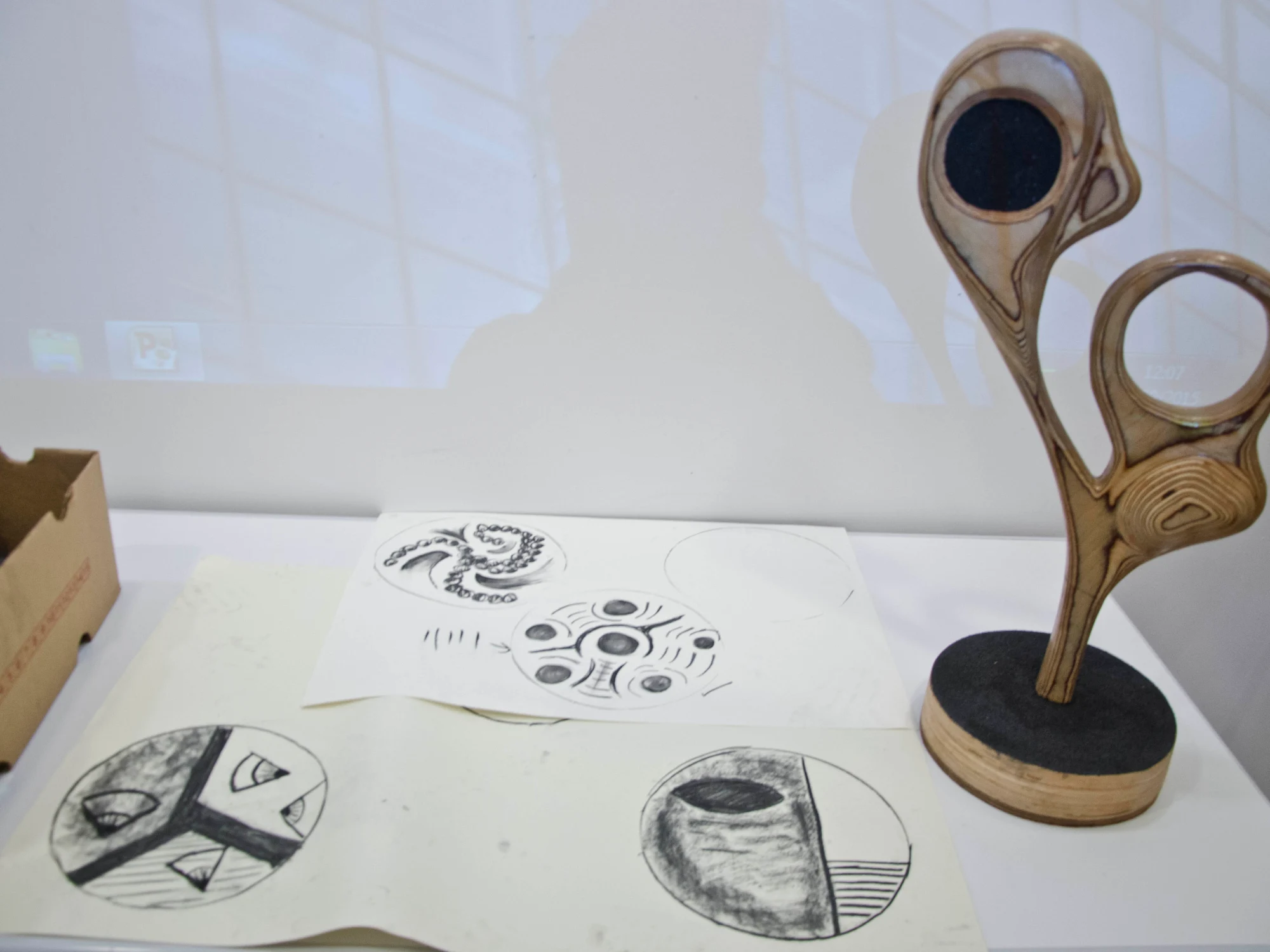
Thinking about the methodological challenge of movement/ Dylan Yamada-Rice, Abi Hackett, Artist Rachael Hand and Information Experience Designer Caroline Claisse
Why is it important for researchers to consider movement? How can visual methods rise to the methodological challenge movement presents? In the first part of the session,we will consider these questions, before presenting a range of ways in which researchers and artists have attempted to capture and visualise movement.
After lunch, we will work in small groups to do fieldwork in a local park. Focussing on capturing and visualising movement of different generations of people using the park, students will work with an artist to explore a range of approaches. In the last part of the session, students will share their visual data. Discussion will focus on how different approaches to visualising movement offer different affordances, what is foregrounded and what is excluded in the choice of medium and method.
Video, Screencasts, Comic Strips and Virtual Models/ Chris Bailey, Sheffield Hallam University
This workshop began with a reflection of the data collection methods employed during a year-long ethnographic study of an after-school Minecraft Club: 'Investigating the lived experience of a children's virtual world after school club'. During the initial part of this workshop participants explored a number of different data collection methods relating to examples drawn from this multi-sited,on- and off-screen project. They consideedr the affordances and constraints involved when using video, screencast and field notes. They also examined the use of a discussion technique where participants constructed virtual models to help them represent their ideas visually. Additionally, workshop participants investigated the use of three different techniques for representing and interpreting this data - video annotation, multimodal transcription and the use of comic strips.
One-day Training Course for Doctoral Students & Academics
Innovative Visual Methods for including Children & Young People in Research
Feburary 2016
This was offered as a pre-conference masterclass in delegates attending the Centre for the Study of Childhood an Youth International Conference.

This keynote outlined hacker and maker workshops for children organised by Glück Workshops in Berlin. It was gollwed by a practical session where master class participants were able to try some of the methods and discuss how these could be adopted to more traditional participatory approaches to research with children and young people or lead into more innovative and exploratory ideas.
Mapping children’s engagement with images and writing in urban landscapes/ Dylan Yamada-Rice and Sophia Gowers
This session was followed by a practical workshop on data collecion and visual analysis using photography and analysing children’s photography.
The Role of the Visual as Ethnographic Method and Practice in Family Homes/ Fiona Scott
This talk was followed by a practical workshop on abalysing sound and video and exploring what is lost an gained through various methods of doing so.
Keynote/ Claire van Rhyn
Analysing and Representing Children’s Movement/ Abi Hackett
Research through and with Comics
ICOSS Conference Room, 5th November 2015
Participants were introduced to various approaches to researching comics. We look at how comics can be used to carry out research, and then how they are used to communicate research findings. We consider how comics provide ways of critical thinking and explaining complex ideas to diverse audiences. We also look at ways of actually doing research on and with comics as communicative objects that intersect with different cultural contexts. There is a strong practical element throughout with everyone producing comics to explore these aspects.
Approach one: representations of emotions/ Richard Finn and Dylan Yamada-Rice
The way in which emotion or meaning is represented in the visual mode is culturally specific, and it is necessary to problematise taken for granted or common sense assumptions about the meaning or use of the visual. Comics are an interesting route to investigating this research problem, because of the specific way in which image and words are combined in a comic and, some argue, the linearity of how these words and images are arranged.
An activity was set to ask participants to add lines to a cartoon character to portray emotion:


Approach two: literary criticism/ Alex Broadhead, University of Liverpool
Students were invited to discuss the article: Al-Jawad, M. 2013) Comics are Research: Graphic Narratives as a New Way of Seeing Clinical Practice, Journal of Medical Humanities.
Approach three: applied comics in research/ Matt Cheeseman
Matt Drew on methodologies from his rese
arch project Phoenix in which qualitative interviews with cancer survivors were thematically analysed. These themes and extracts from the data were then taken up by a range of graphic artists, and represented as comics. The research also investigated whether the comics themselves had a theraputic effect for cancer survivors by enabling them to see and discuss resonant experiences represented in this form.
Approach four: How and why we have worked with comics for research engagement/ Lydia Wysocki, Applied Comics
Lydias work involves collaborating with academics from a range of disciplines to produce comics as a tool for research engagement. Her presentation gave several examples of this approach, with a focus on the detail of the process of realising the comics and the strengths and challenges of this approach.
Summer School participants were asked to evaluate the two-days by making connects between workshops and talks and adding comments:
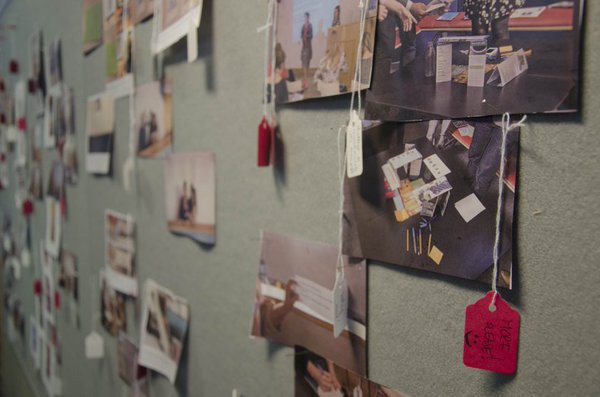
Seminar series
Space, Place and Body in Children's Language Mapping
Margaret Sommerville, University of Western Sydney, 19th June 2015
How artists worked with the AHRC Connected Communities Programme
Kate Pahl anf J Oliver, University of Melbourne, December 2015
Origins of Underground Comics and Research
Diane Rodgers, 28th January 2016
Diane Rodgers gave a brief, informal history and background of the origin of the modern underground coming from Robert Crumb, Peter Bagge and Daniel Clowes to the more personal and diary-form of comics looking at the work of Julie Doucet, Jefferry Brown, Craig Thompson and Julia Wertz. She also discussed her own personal relationship with underground comics and fanzines, and how they have inspired and continue to affect her own creations under her persona as Miss Tassles.

The first half of the presentation gave us a whistle stop tour of some of key comic artists. There were some ideas about comics as a medium and how this compares to other visual media and some thoughts about how comics link with wider culture.
Comic Strips and Virtual Models: taking count of multiple modes across on and off screen space
Chris Bailey, Sheffield Hallam University 8th Descember 2015
Chris Bailey presented his ethnographic study of an afterschool Minecraft Club. His presentation covered the methodological approaches he used in the year-long ethnographic study. The study explored a ‘virtual community’ in the video game Minecraft, which was the focus of an after-school club. A range of visual and audio data were collected from children’s interaction on and off screen. Various methods of data collection were used, such as field notes, videos, photographs, screencasts, and screenshots. Chris explained the two different approaches used in different stages of the research.
The first stage of the research used the game to conduct a small group discussion sessions, with participants building a virtual model in Minecraft to represent their ideas of the game visually as well as verbally. Chris Bailey asked the important question ‘What if children don’t want to be interviewed?’ In response to this he showed how through Minecraft, he was able to find a platform for collecting research data with children on a range of topics. Furthermore, the playful methodology has given him a relaxing way to conduct the research and encouraged a nice flow of discussion among the children. Building sculptures of the blocks were able to showcase children’s personality and create a community in the club.
The second stage explained how comic strips were used to represent the data gathered in the club. The use of comic strips as an alternative to more traditional text based transcription techniques allowed Chris to show the combination of multiple modes of data such as movement, speech, gaze, text, and visual screen during the game. This method also allowed him to make the emotional expression and settings of Minecraft club visible. To make the comics he used the app ‘Comic Life’. This application was able to help with visual transcription and avoid the need to draw comics which would be time consuming and require additional skills.
The Art of Unknowing: The joy of amateur practice as a space for emancipation from the constraints of academic discipline
Mel Levick-Parkin and Katy Caroll, 25th Feburary 2016
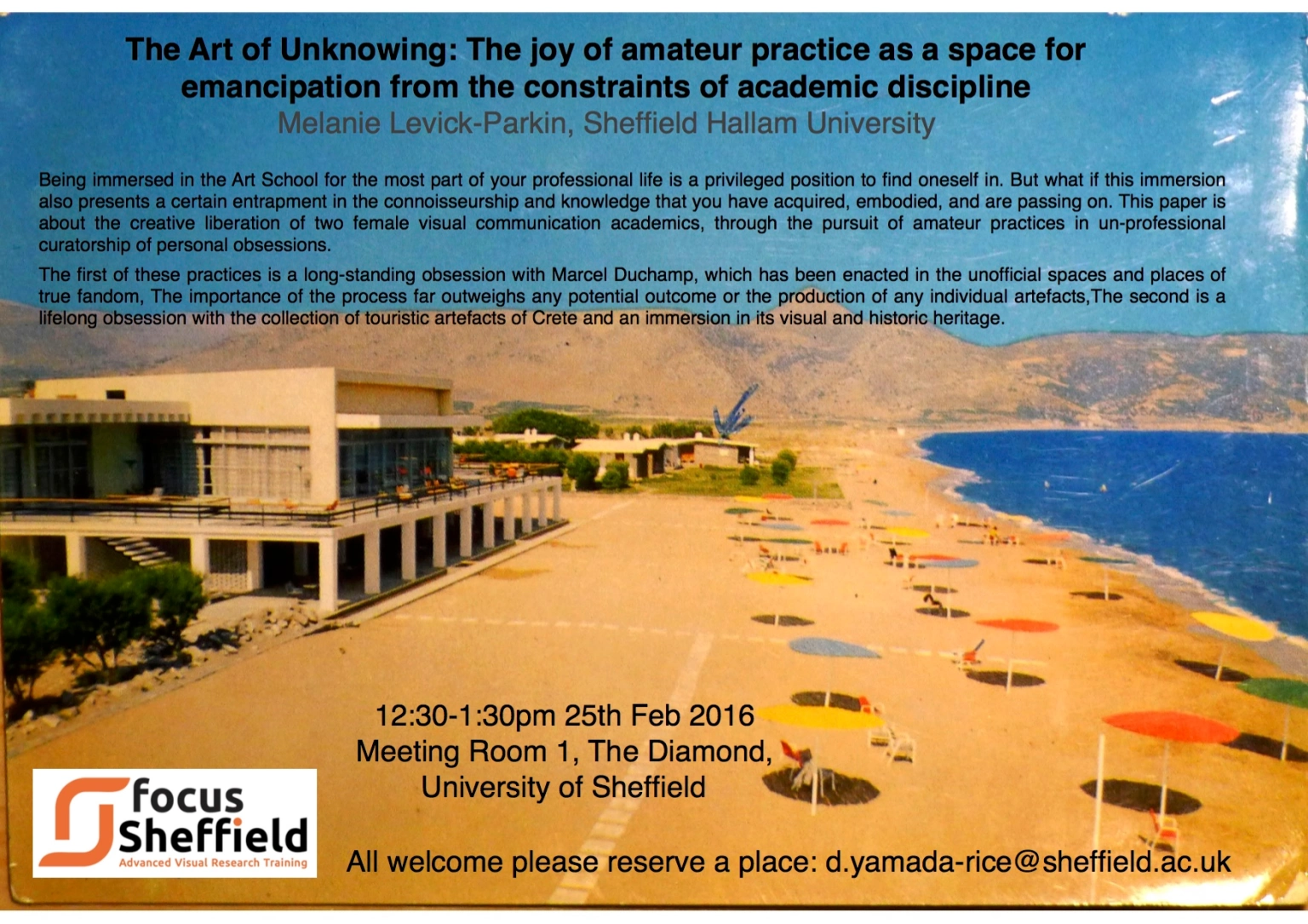
Being immersed in the Art School for the most part of your professional life is a privileged position to find oneself in. But what if this immersion also presents a certain entrapment in the connoisseurship and knowledge that you have acquired, embodied, and are passing on. This paper is about the creative liberation of two female visual communication academics, through the pursuit of amateur practices in un-professional curatorship of personal obsessions.
The first of these practices is a long-standing obsession with Marcel Duchamp, which has been enacted in the unofficial spaces and places of true fandom, where obsessions are lived out and ideas of being a neutral historian no longer need to be adhered to. The practice that has emerged is one based on leisure, travel and appropriation through collecting, recording and archiving. The importance of the process far
outweighs any potential outcome or the production of any individual artefacts, as it is these alternative ways of experiencing, thinking about and documenting Marcel Duchamp that are the ultimate centre and purpose of this practice, – a kind of Duchamp Tourism.
The second amateur practice could be considered to have made a similar journey of engagement only in reverse. The experience of childhood holidays on the island of Crete started a lifelong obsession with the collection of touristic artefacts and an immersion in its visual and historic heritage. An added dimension of ‘living out’ being the amateur, in as far as whilst loving a foreign place you still always remain ‘un-official’ – an outsider.
This paper is an opportunity to discuss not only the freedom that is inherent in the enactment of amateur practices, but also the struggle to remain within the joy of the process rather than arriving at a
destination. How can we preserve the freedom of ‘unknowing’ at the same time as the agency of the objects and experiences collected keeps on ‘acting back’ (Ingold 2009); beckoning to be solidified out of the aesthetic experience of the ‘making’ to new, but potentially dead-end, forms?
Social Scientist & Artist Collaboration Project
Pencil Drawing/ Abi Hackett & Rachael Hand
This was a collaboration between the social scientist Abi Hackett and the Artist Rachael Hand who writes:
“The art installation Pencil Drawing was made as an expression of my collaboration with the ethnographer Abi Hackett and the epidemiologist Pete Dodd in the University of Sheffield Crucible project Kindergarten Safari, studying children’s movement in a playgroup. It is a three dimensional, tangible object, made in response to a study in which objects and touch were vital elements.
At first glance Pencil Drawing looks like a child’s play-table. It is narrow and low, with bright blue sides and chunky wooden legs. Drawing closer, a clattering noise becomes audible, followed by a pause, and then further rattling. Looking at the surface of the table, the noises are revealed to be the sound track to a video, visible in the tabletop. Life-size, vividly coloured pencils are repeatedly flung down, as though onto the table, left untouched for a few seconds, and cleared away. The surface oscillates between being an empty white tabletop, a screen playing a video, and a light-box showing a still composition.”


Publications
Yamada-Rice, D. (2017) 'Using visual and digital research methods with young children'. In: Christensen, P. & James, A. (eds) Research with Children: Perspectives and Practices. Routledge.
Yamada-Rice, D. & Procter, L. (2015) 'Shoes of Childhood: Exploring the Emotiona Politics through which Images become Narrated on Social Media'. In: The Iconic Image on Social Media: A Rapid Research Response to the Death of Aylan Kurdi. Published online by the Visual Social Media Lab. Available online.
Yamada-Rice, D. & Stirling, E. (2015) Visual Methods with Children and Young People. Academics and Visual Industry in Dialogue. London: Palgrave.
Yamada-Rice, D., Procter, L., Stirling, E. & Almansour M. (2015) Review: Margolis & Pauwels (eds) (2011). The Sage Handbook of Visual Research Methods, Visual Communication, Vol. 14. No. 2.
Talks
Defacting Visual Artefacts to Explore ways of Disseminating Research Findings to Children, Quallitative and Ethnographic Reseaerch: Learning through Doing
University of Exteter, 10 May 2013
Exhibitions
September 2017, Z-Arts, Manchester
Images (top left to bottom right): Luka Kille